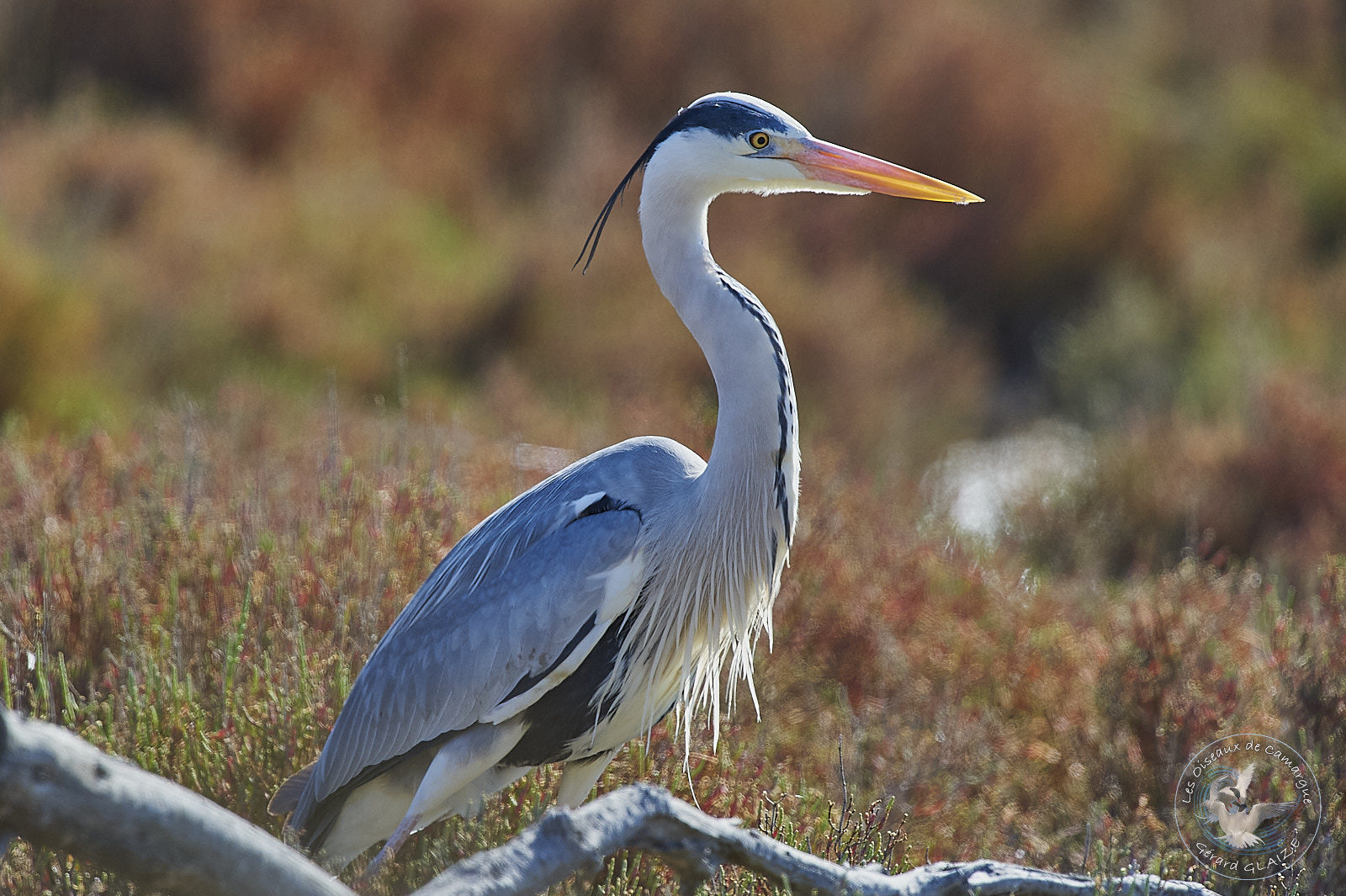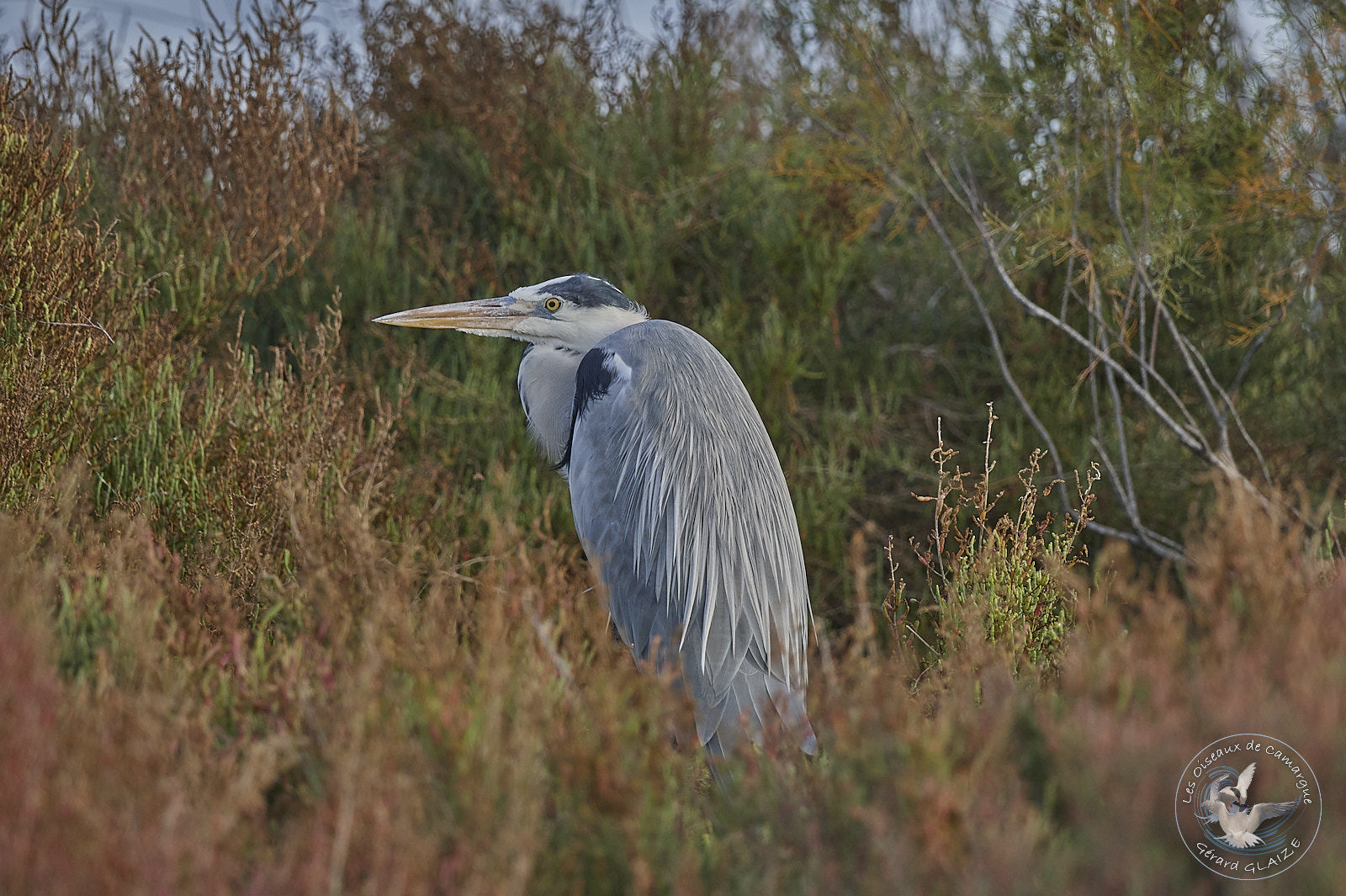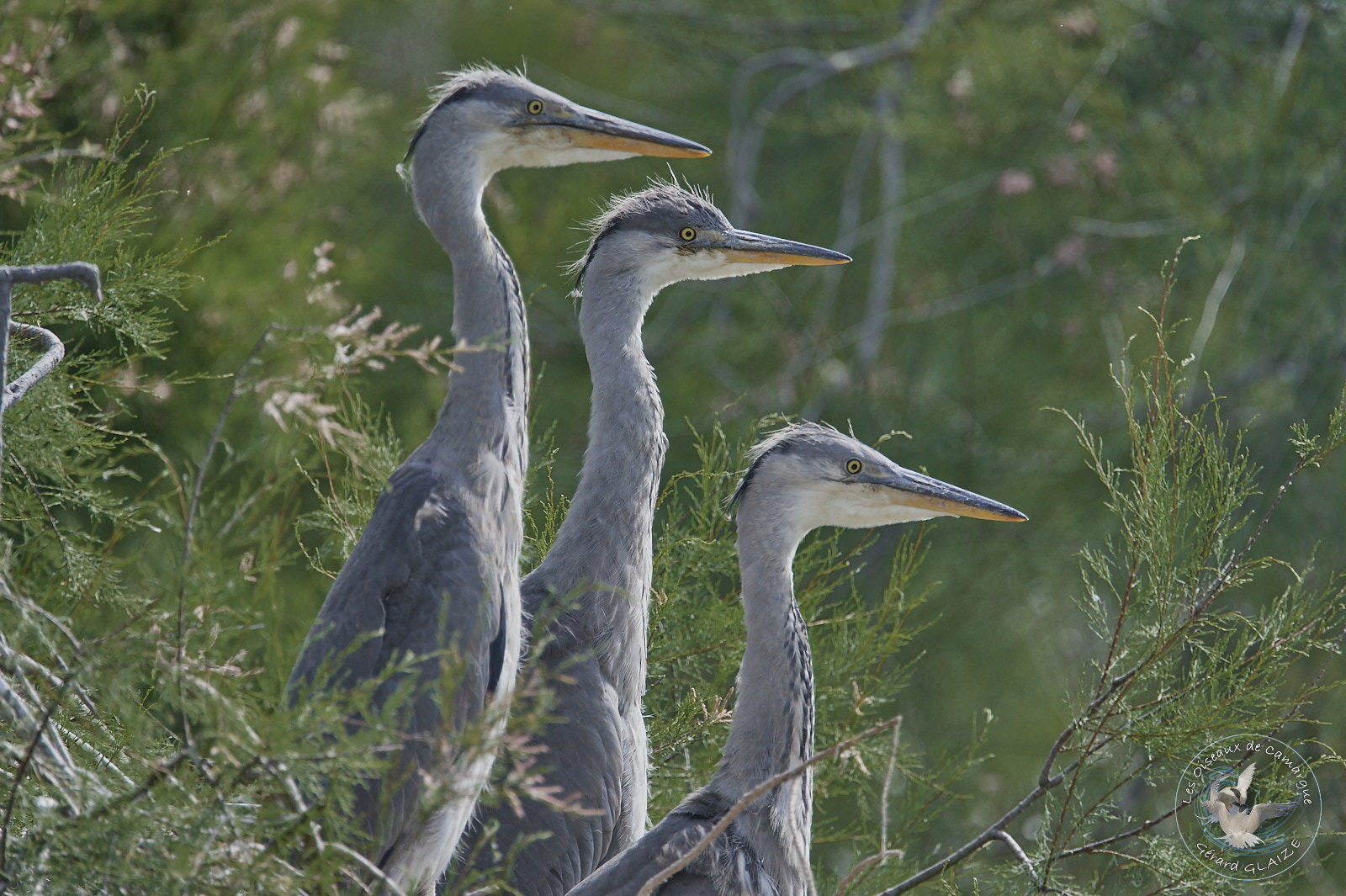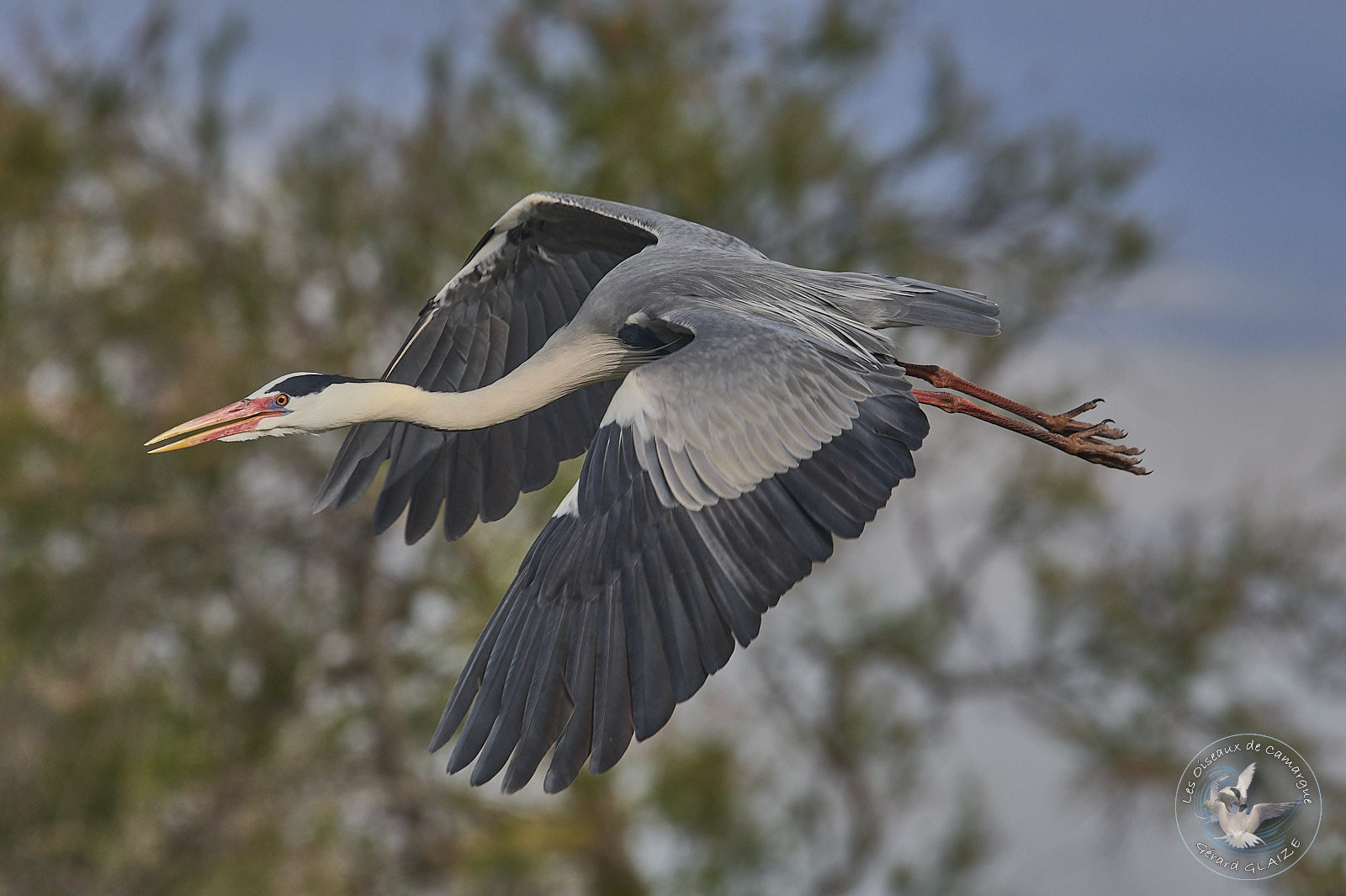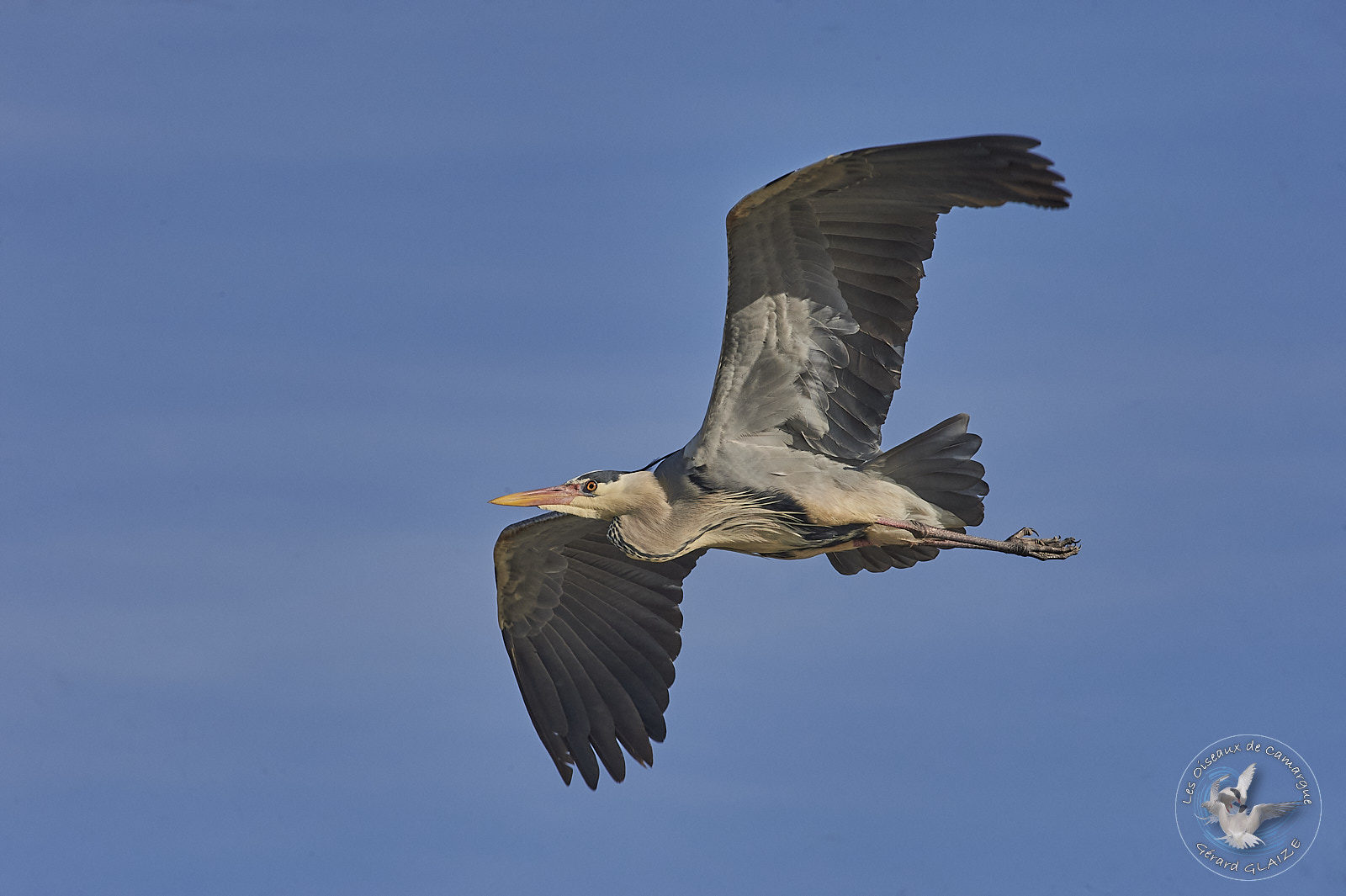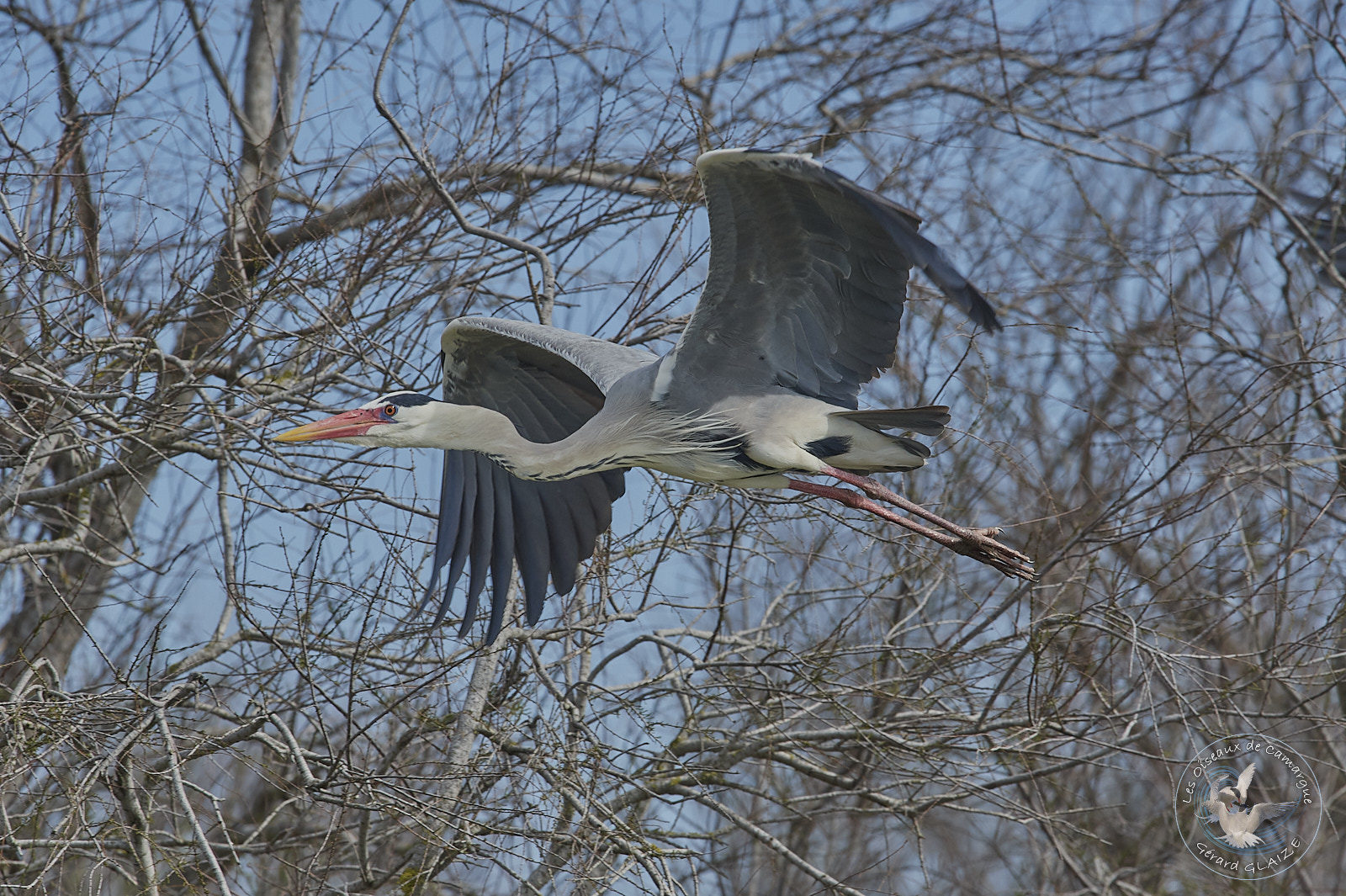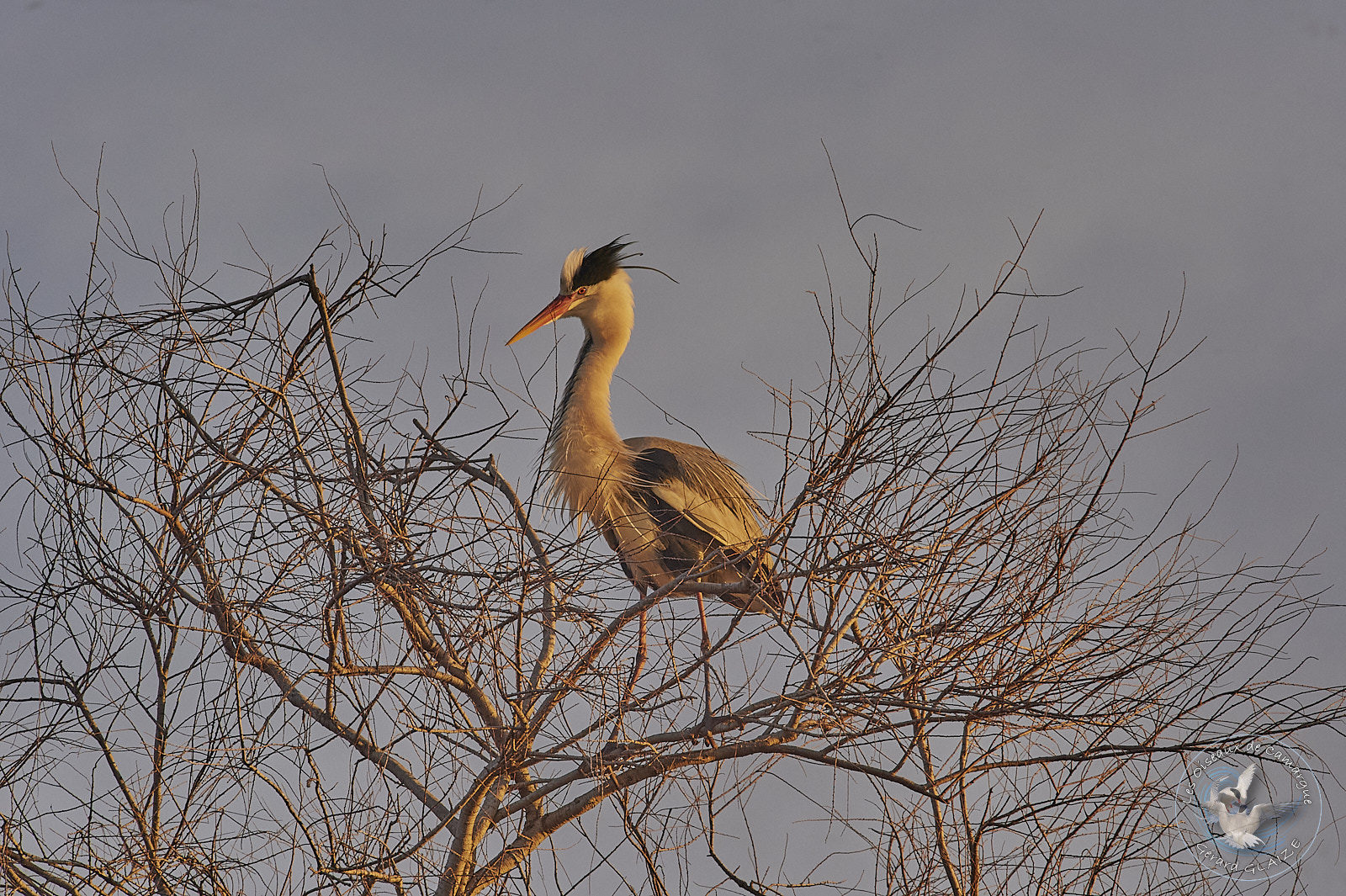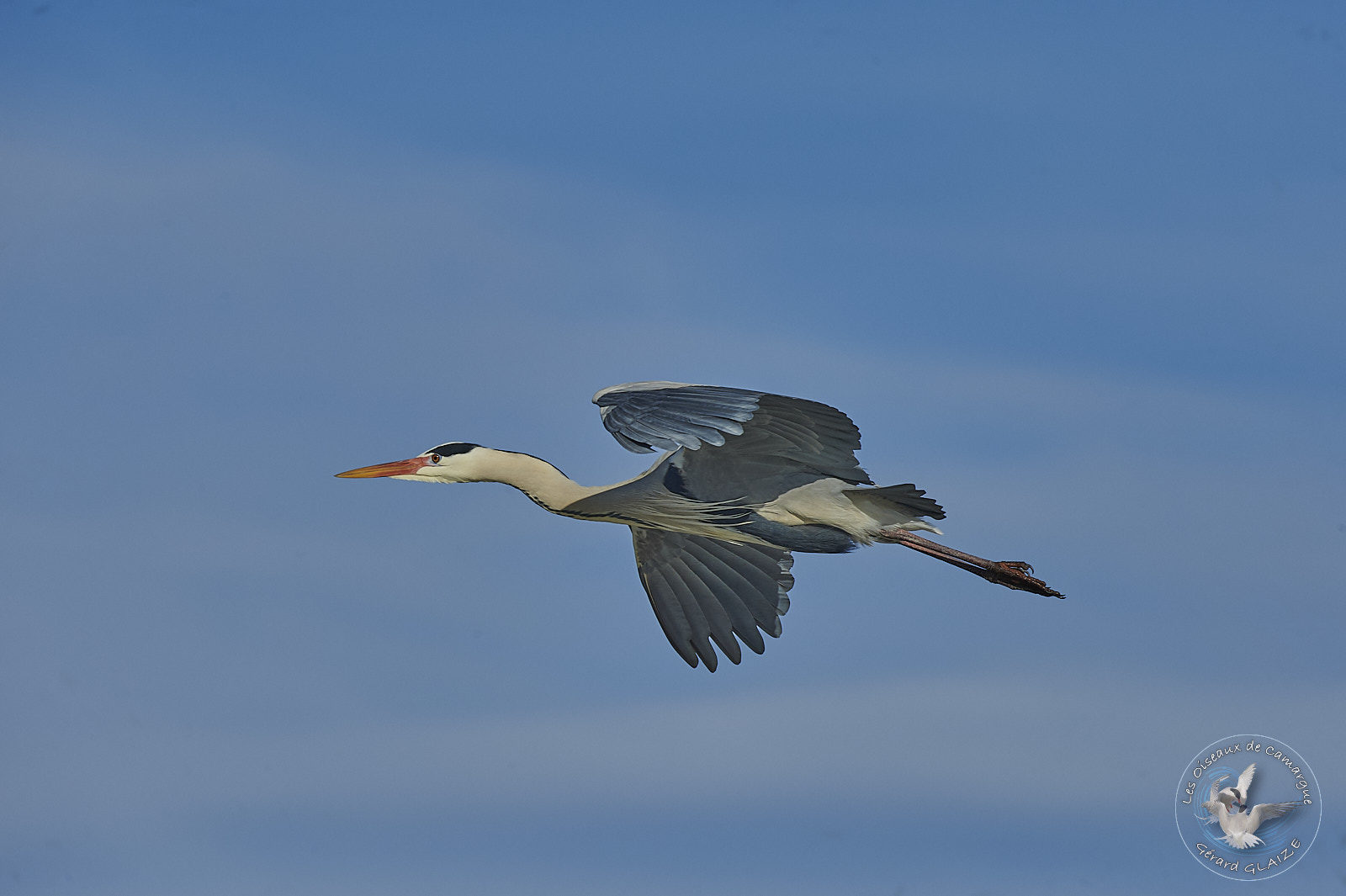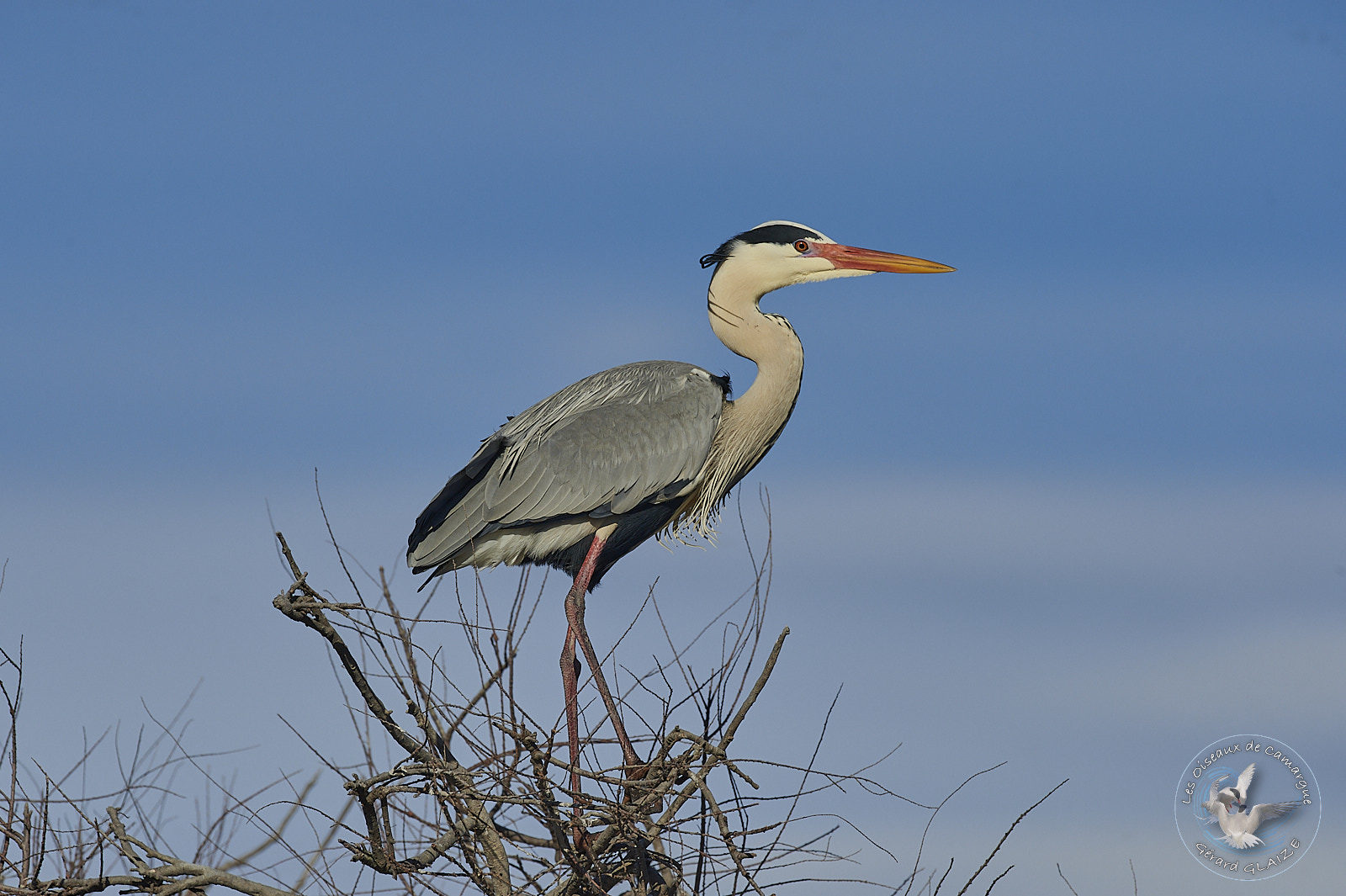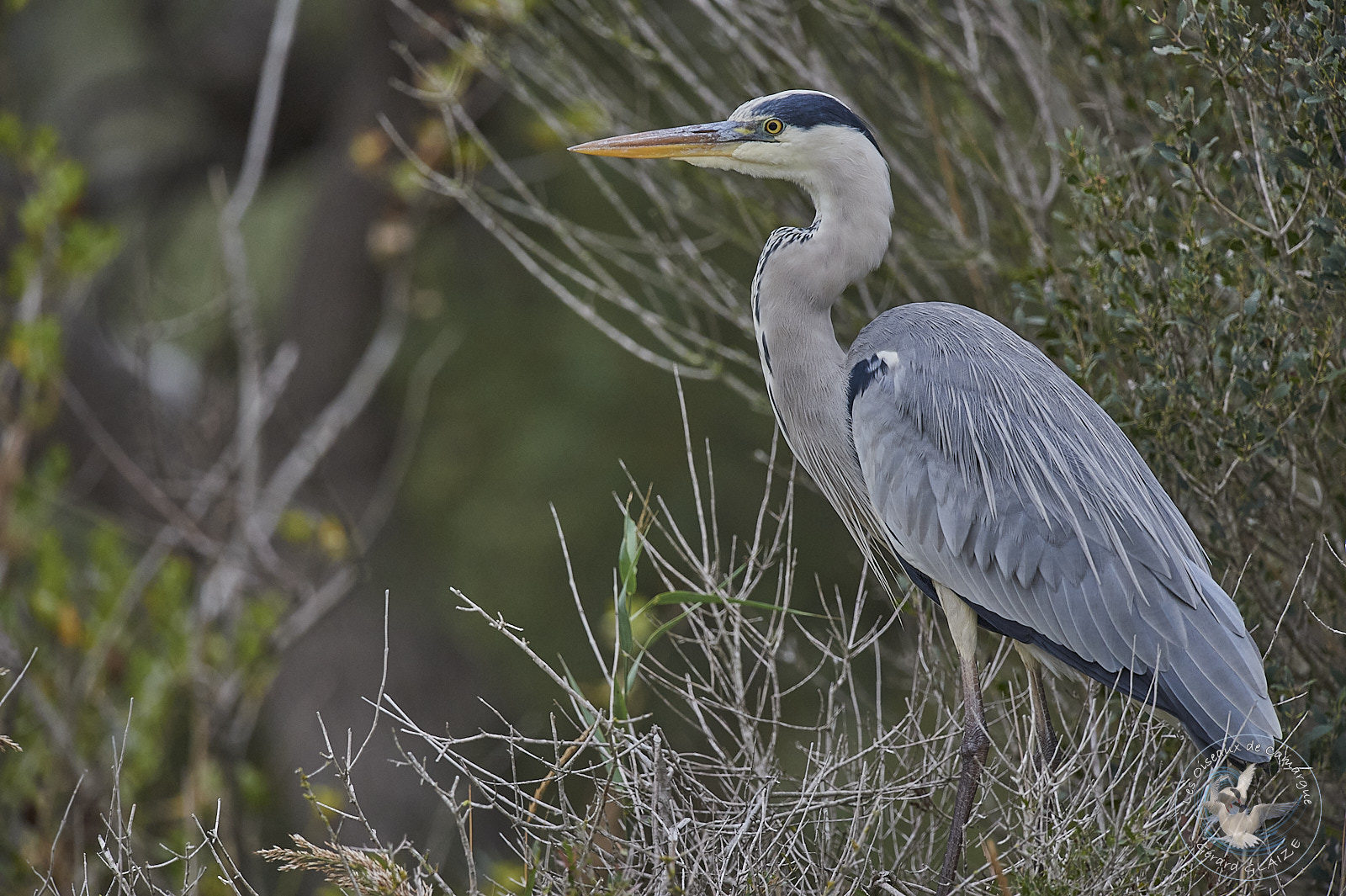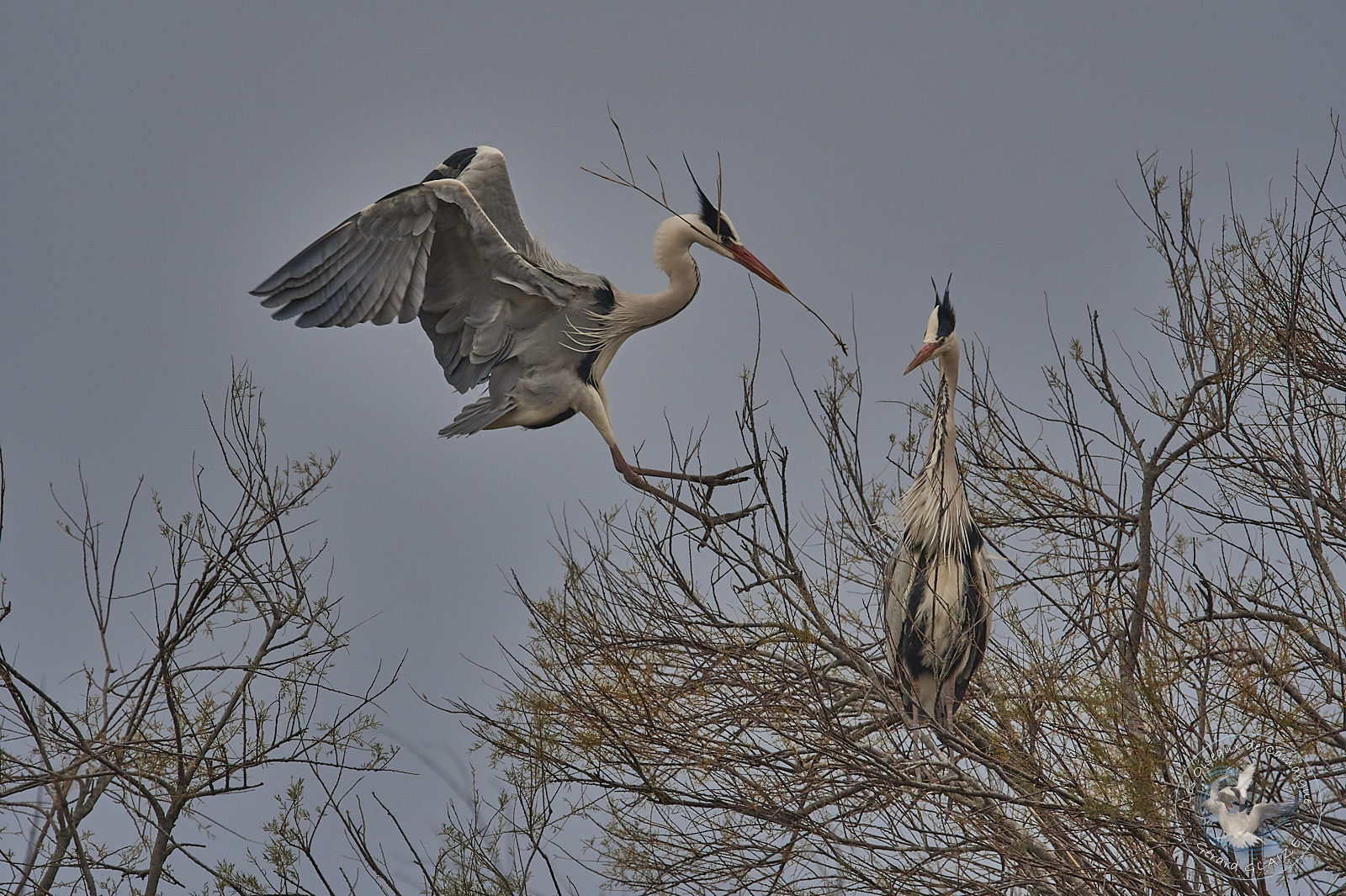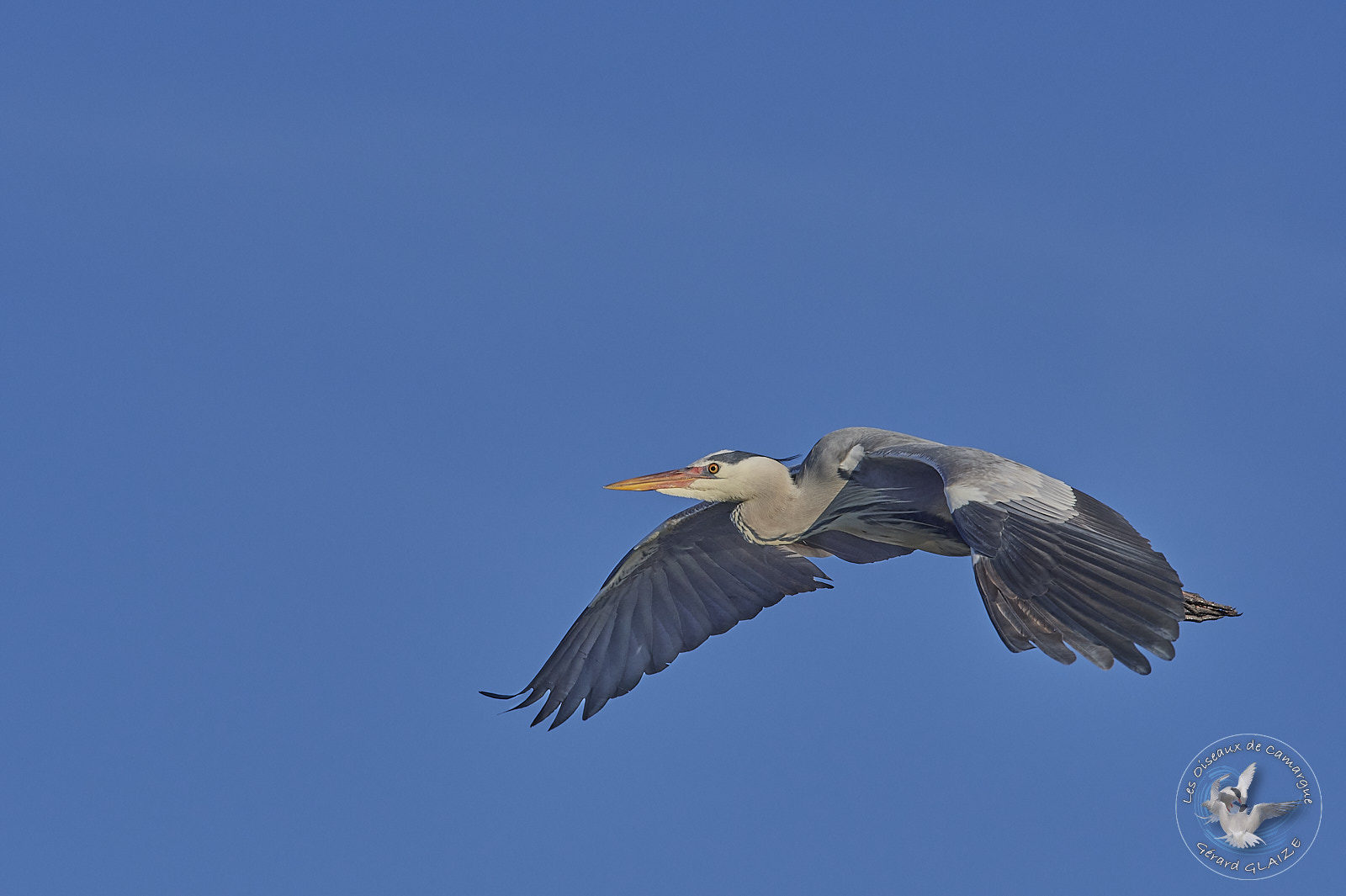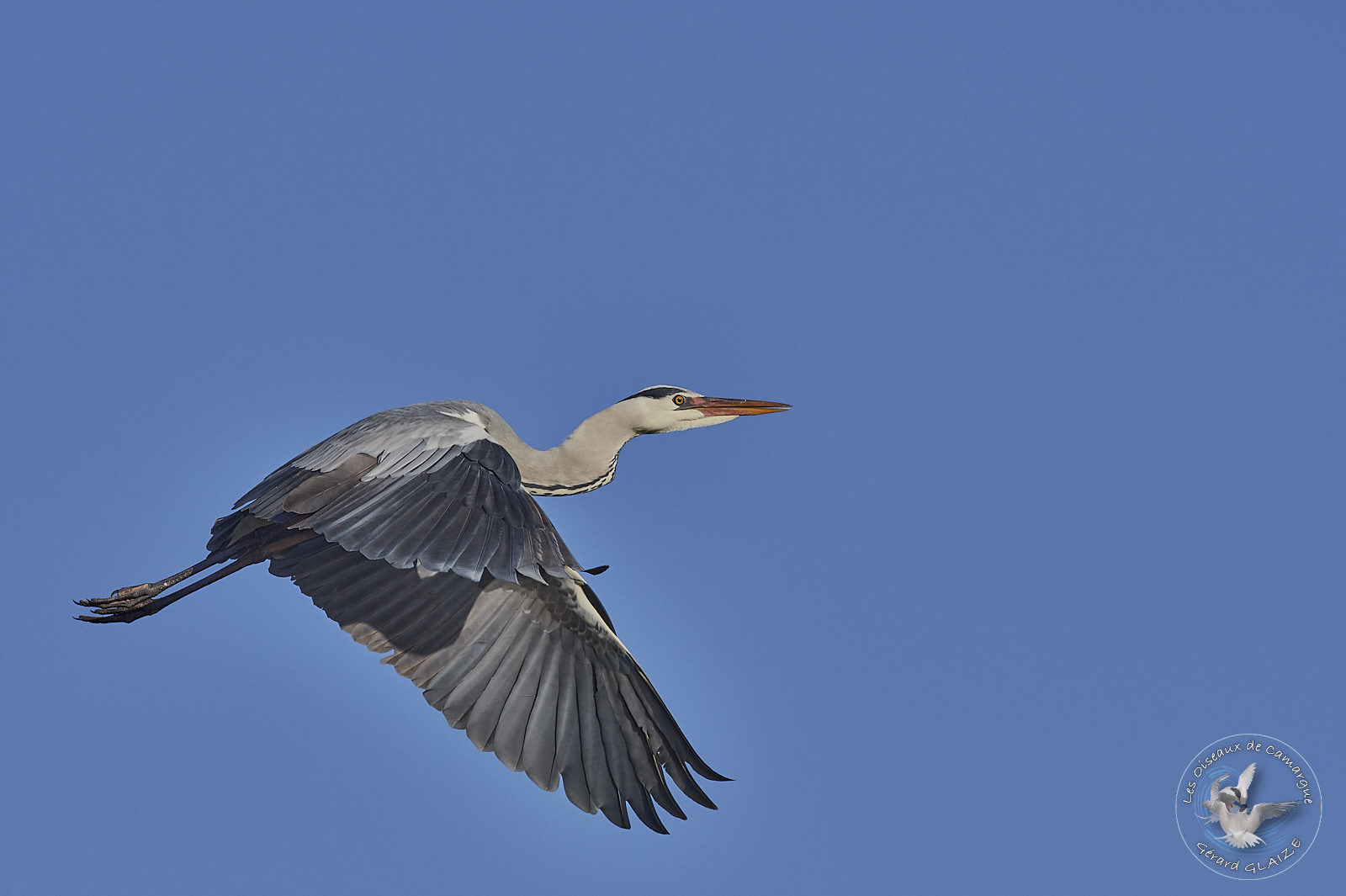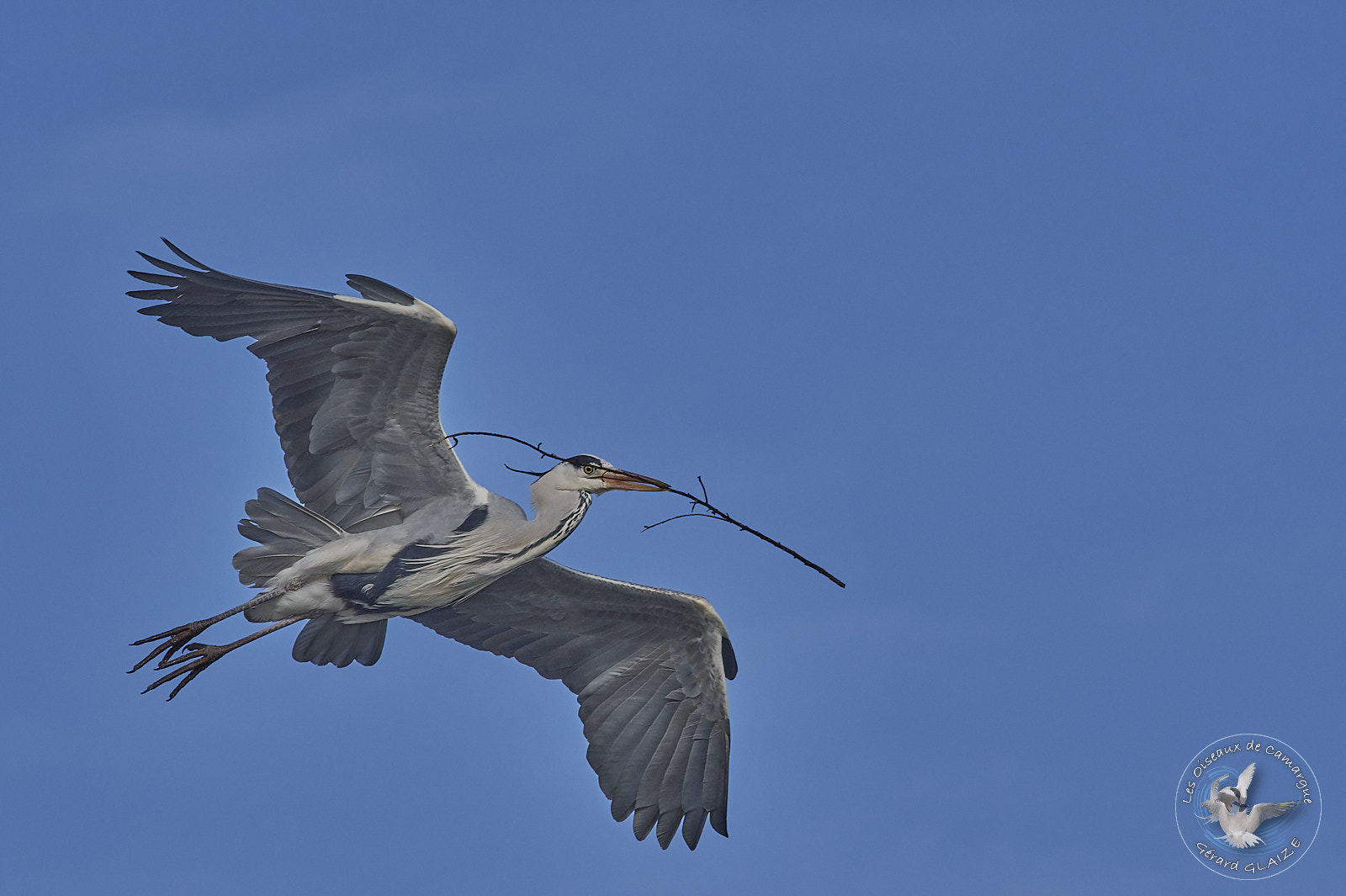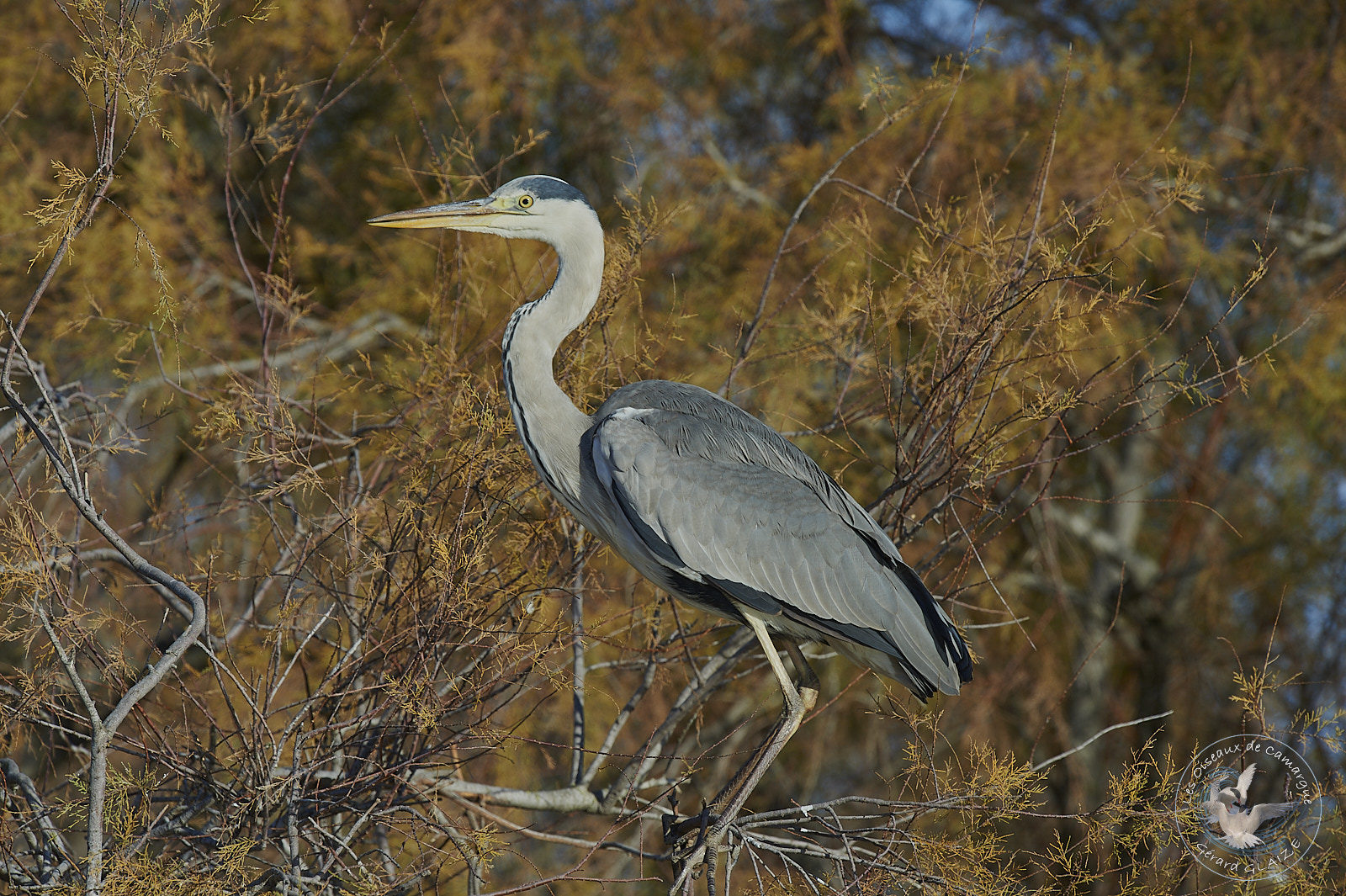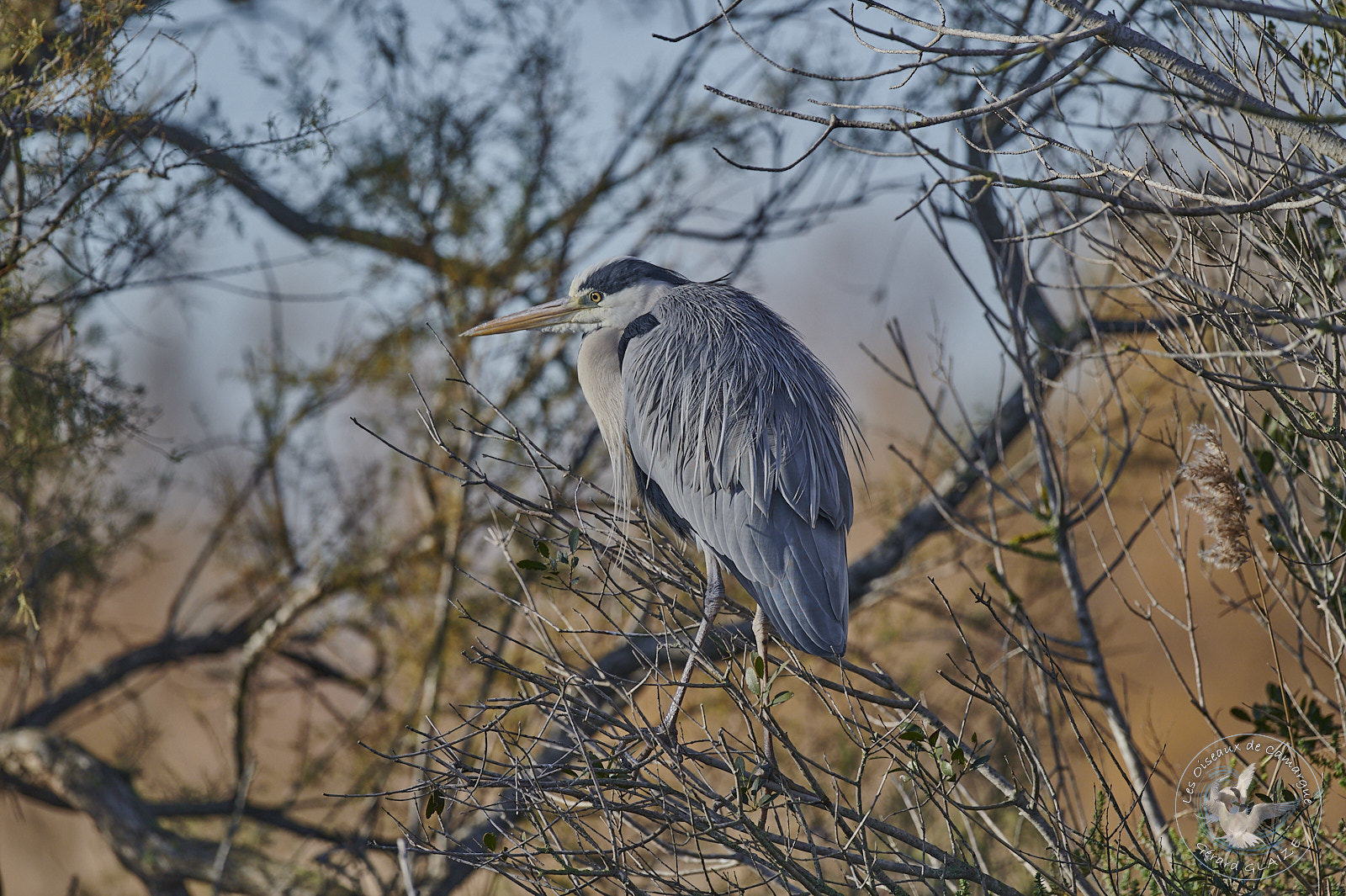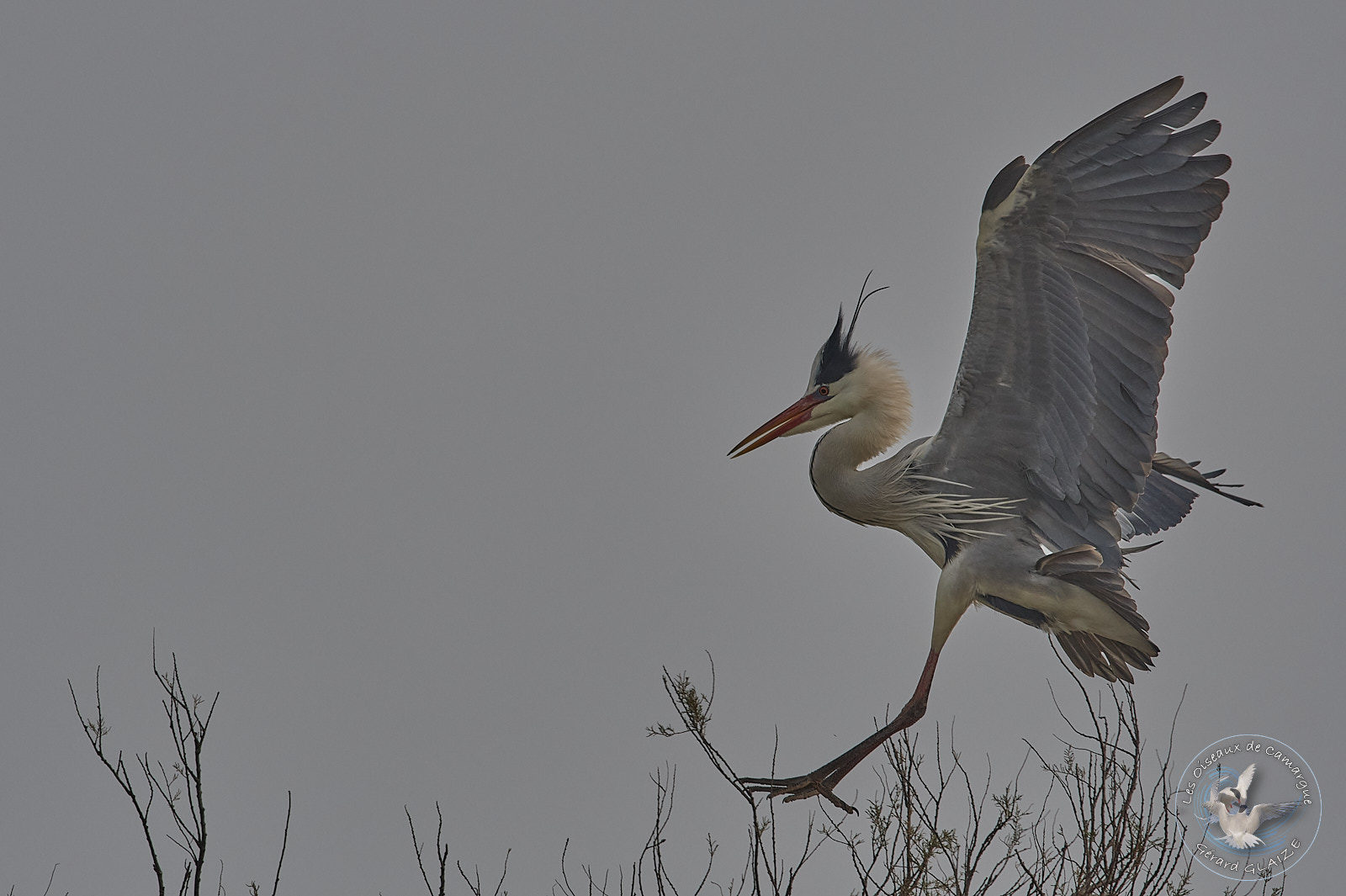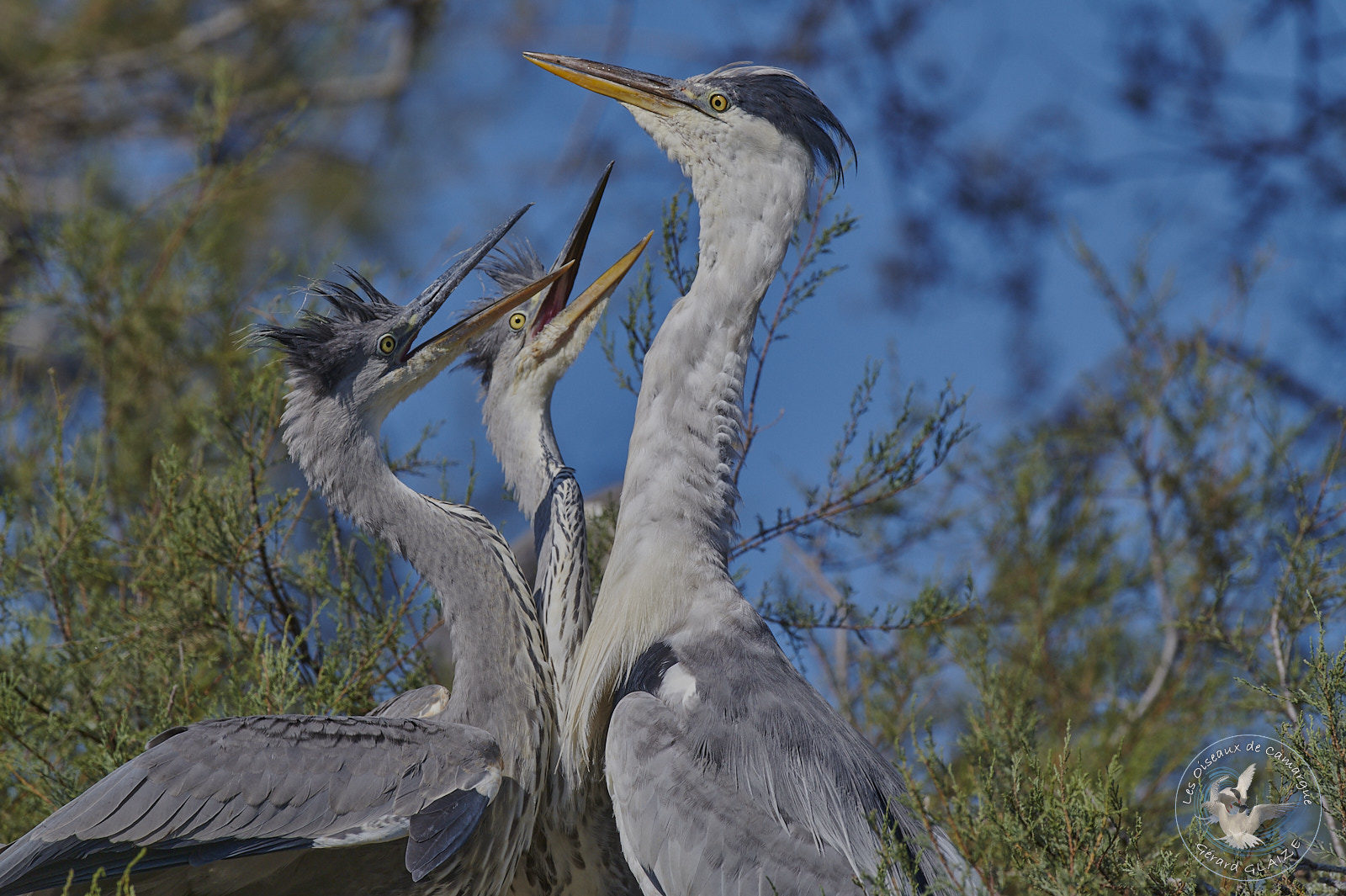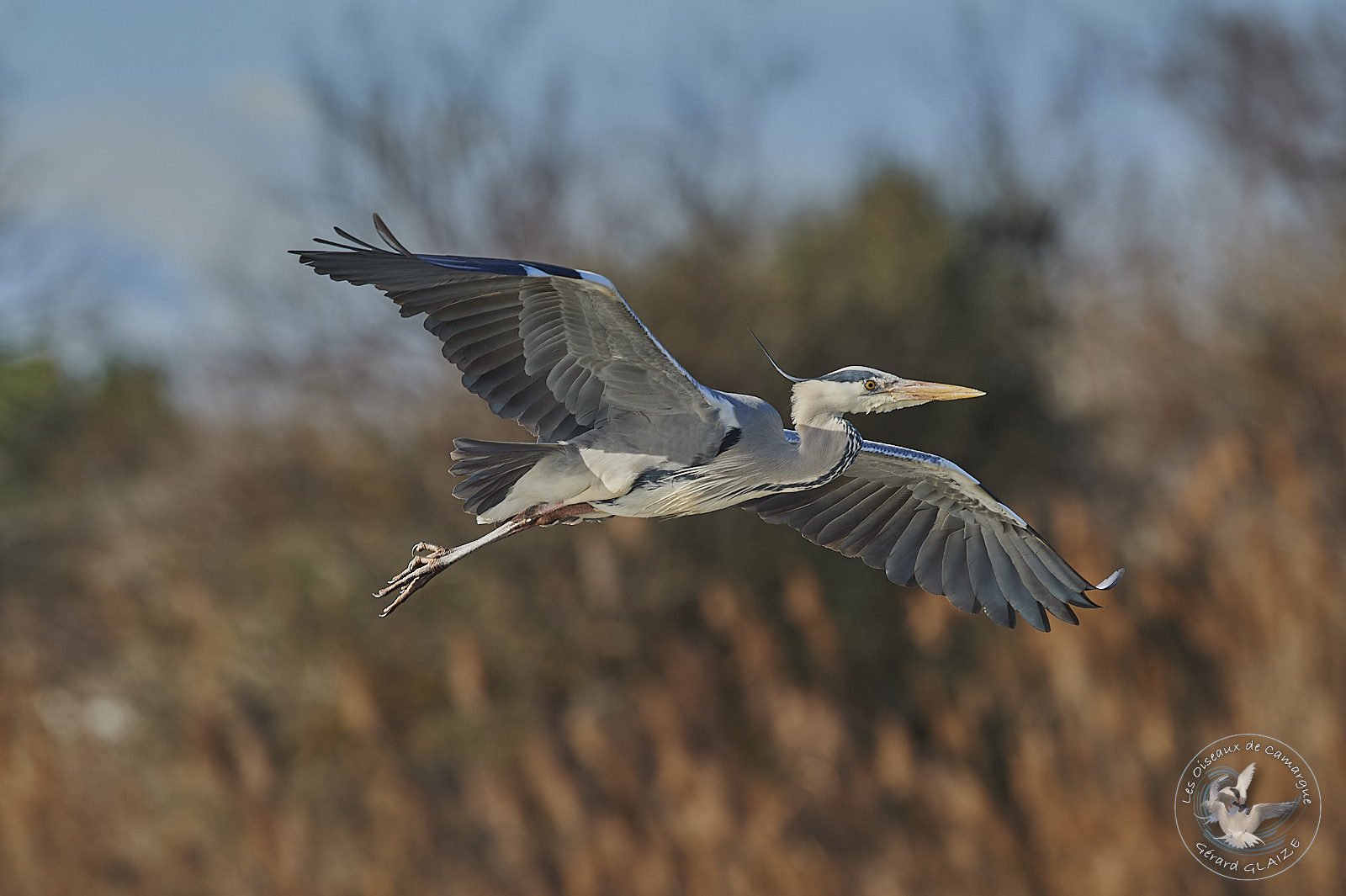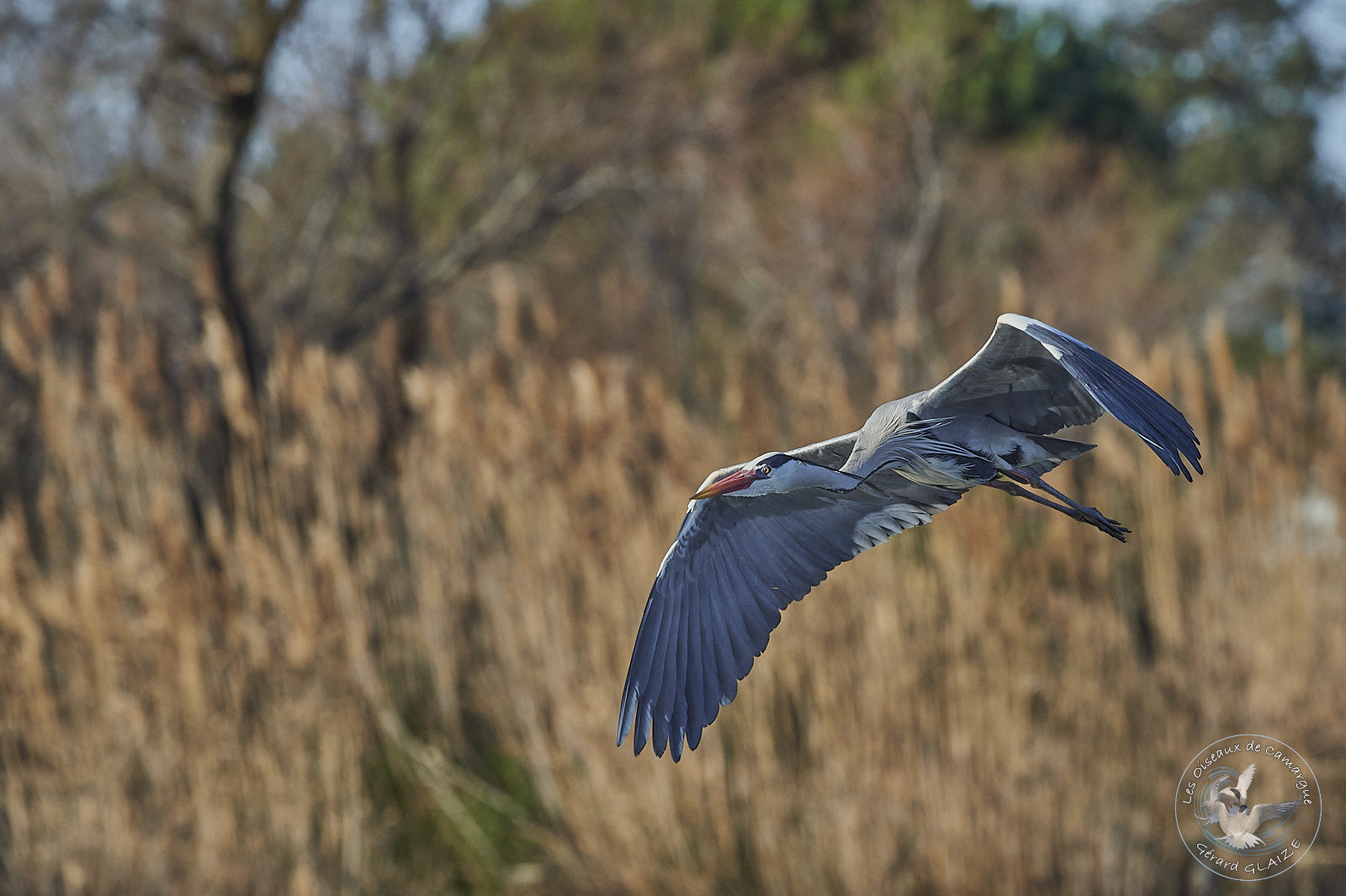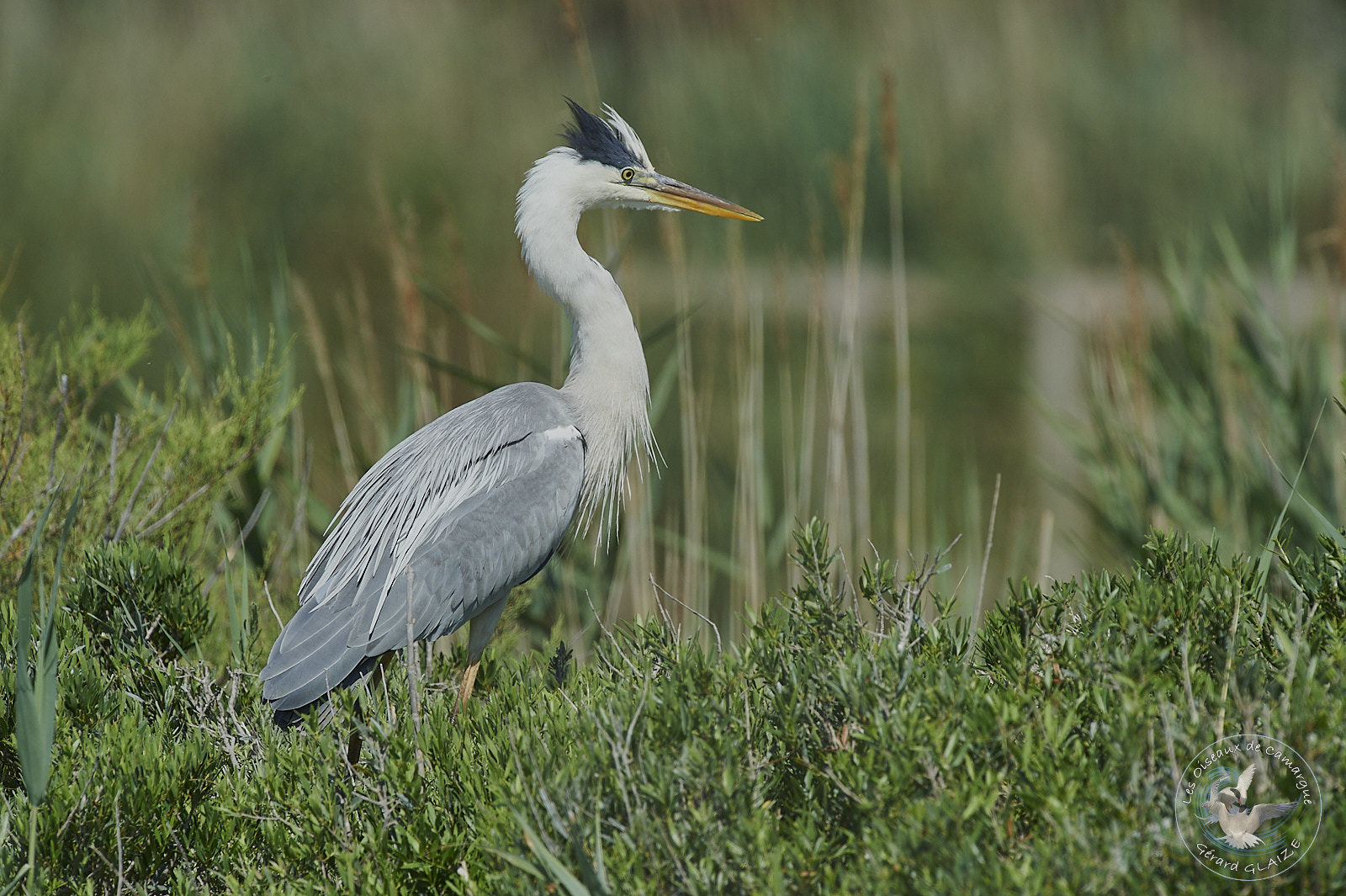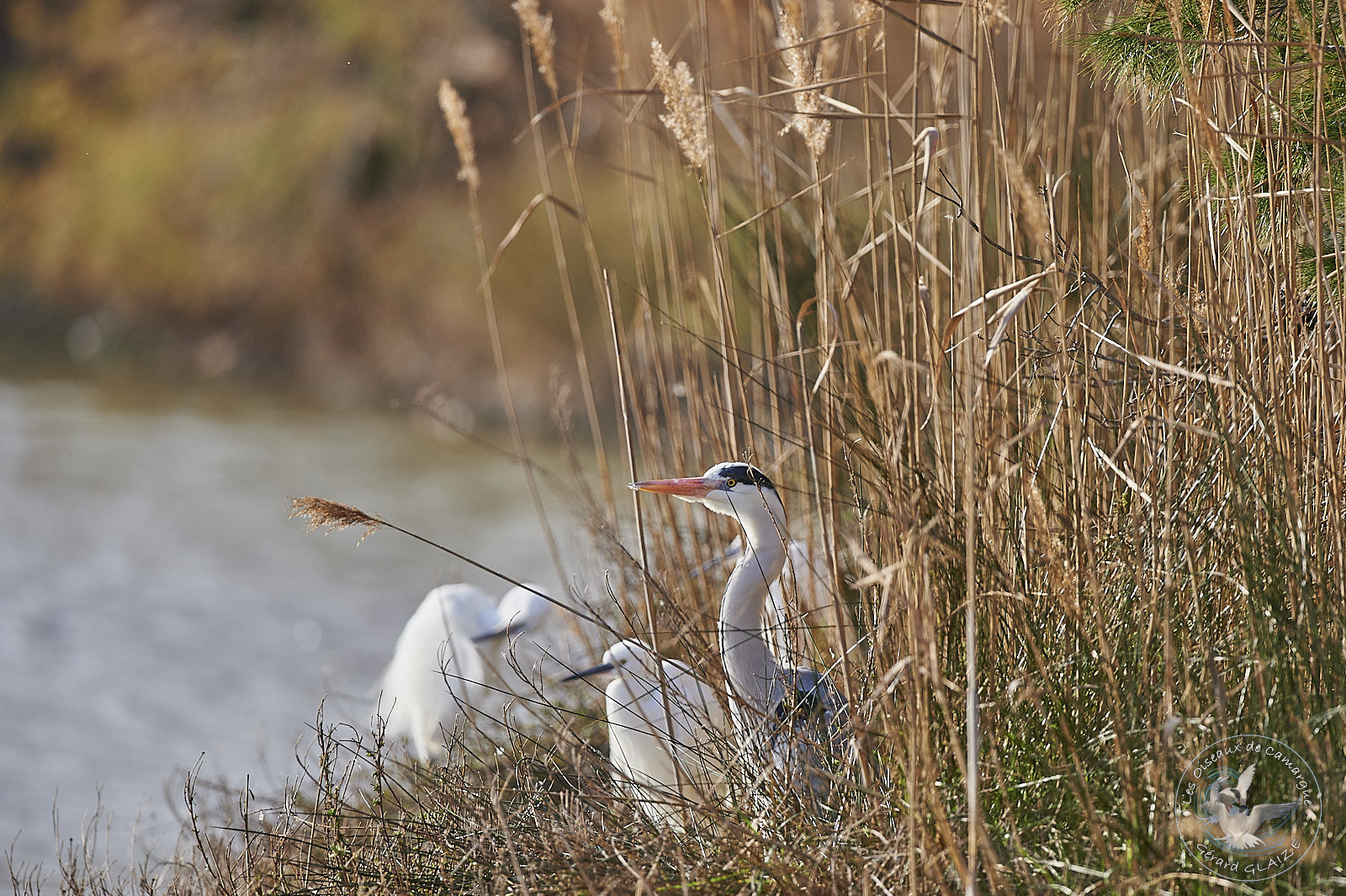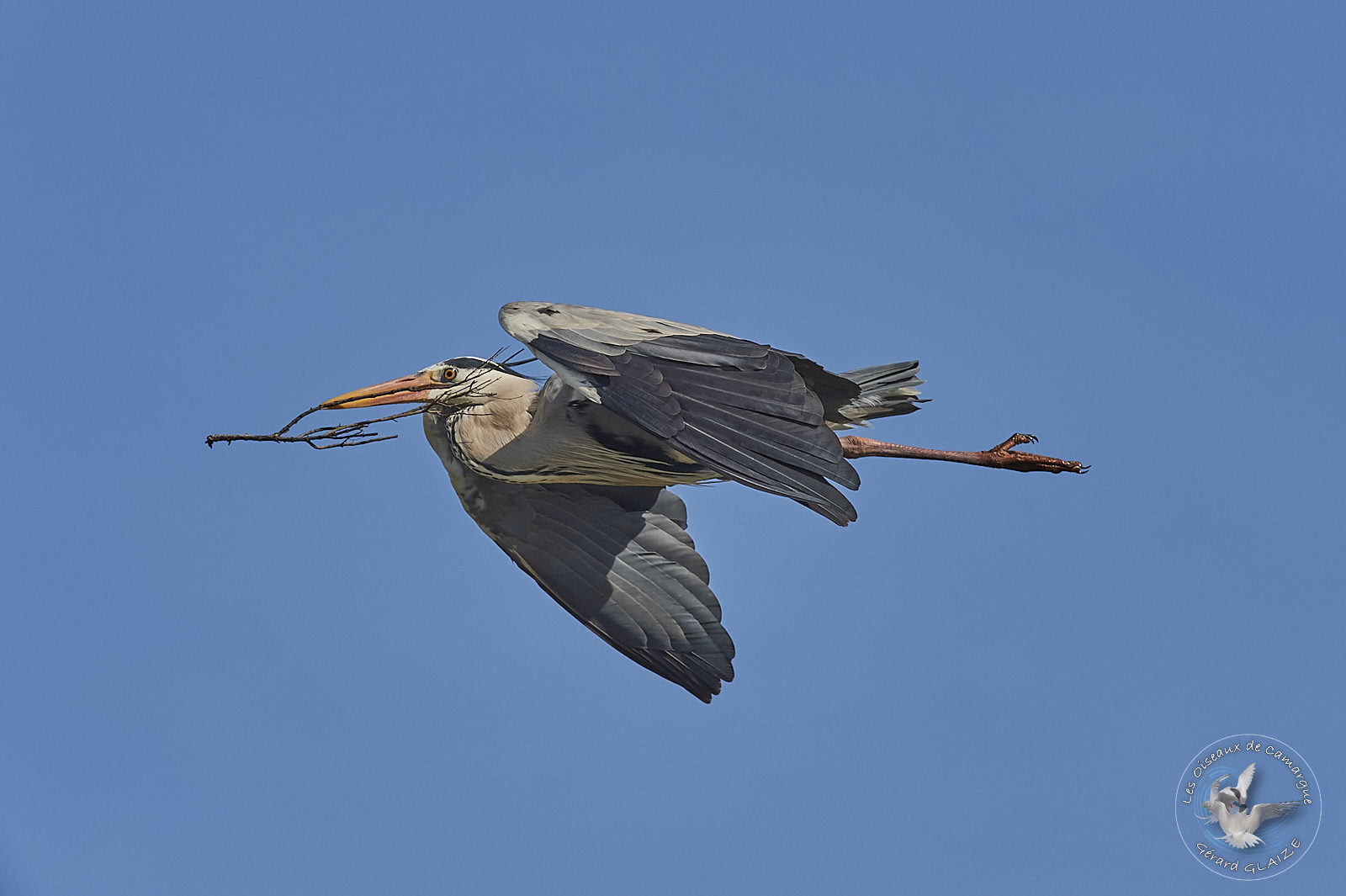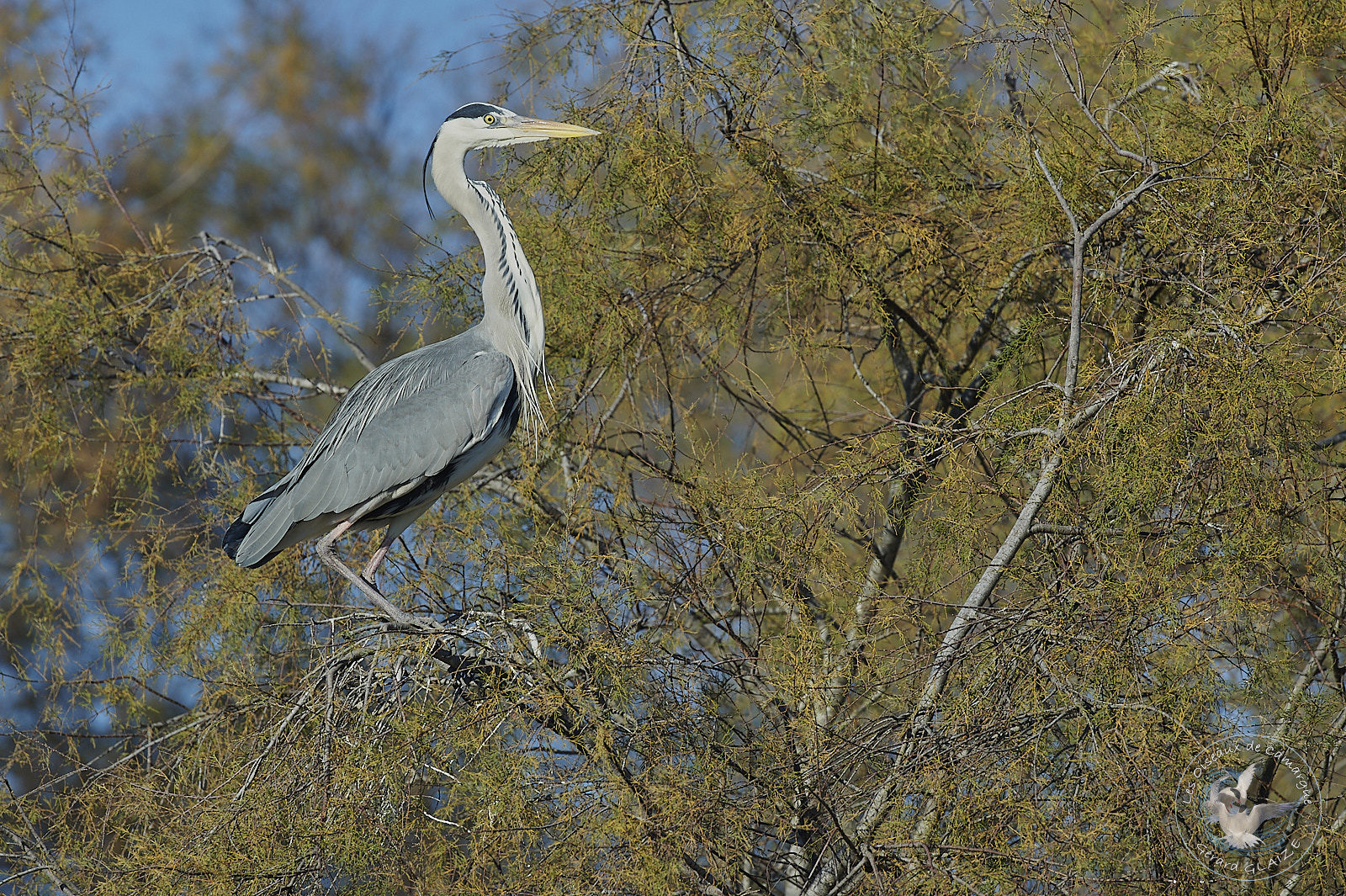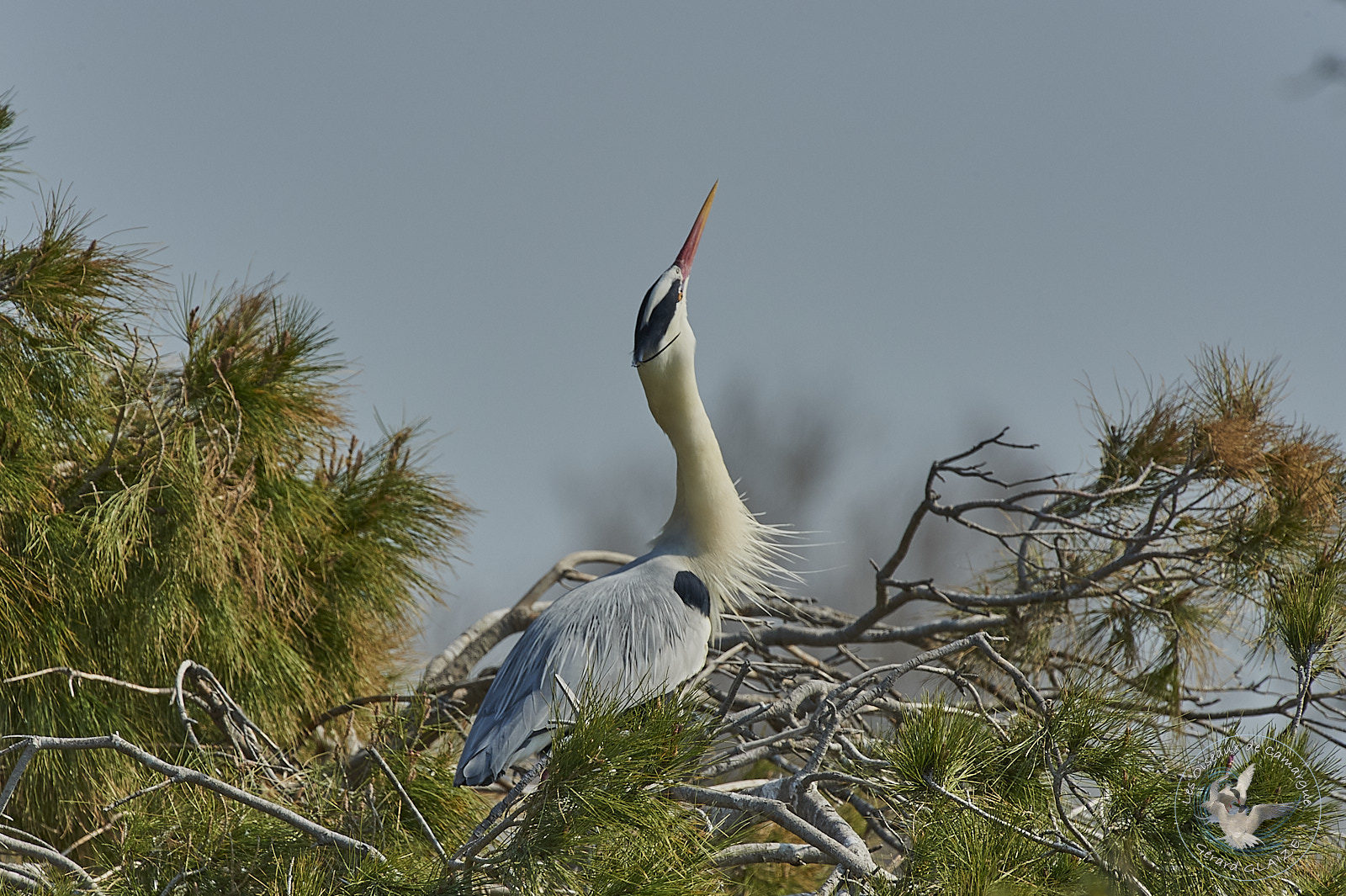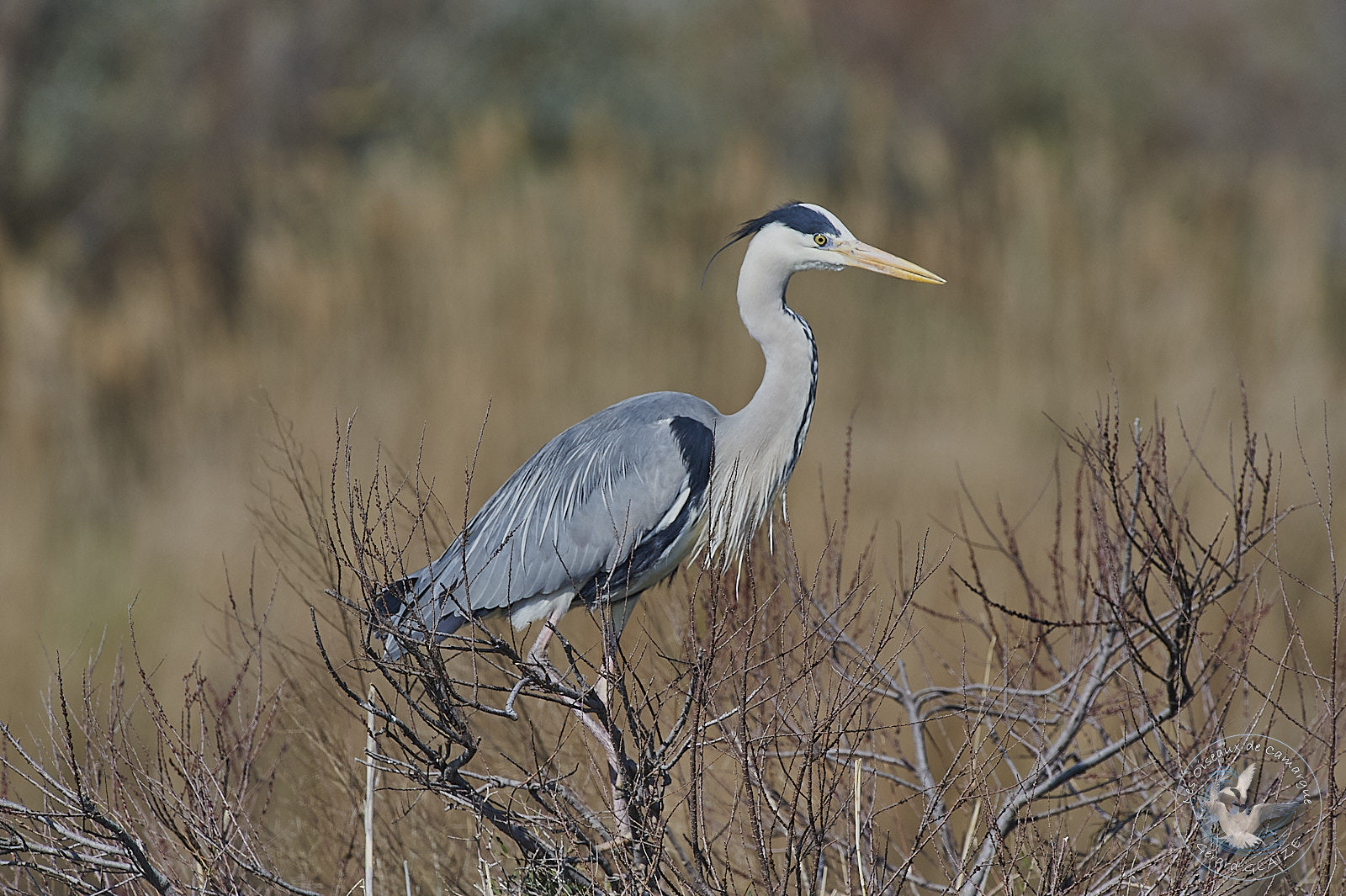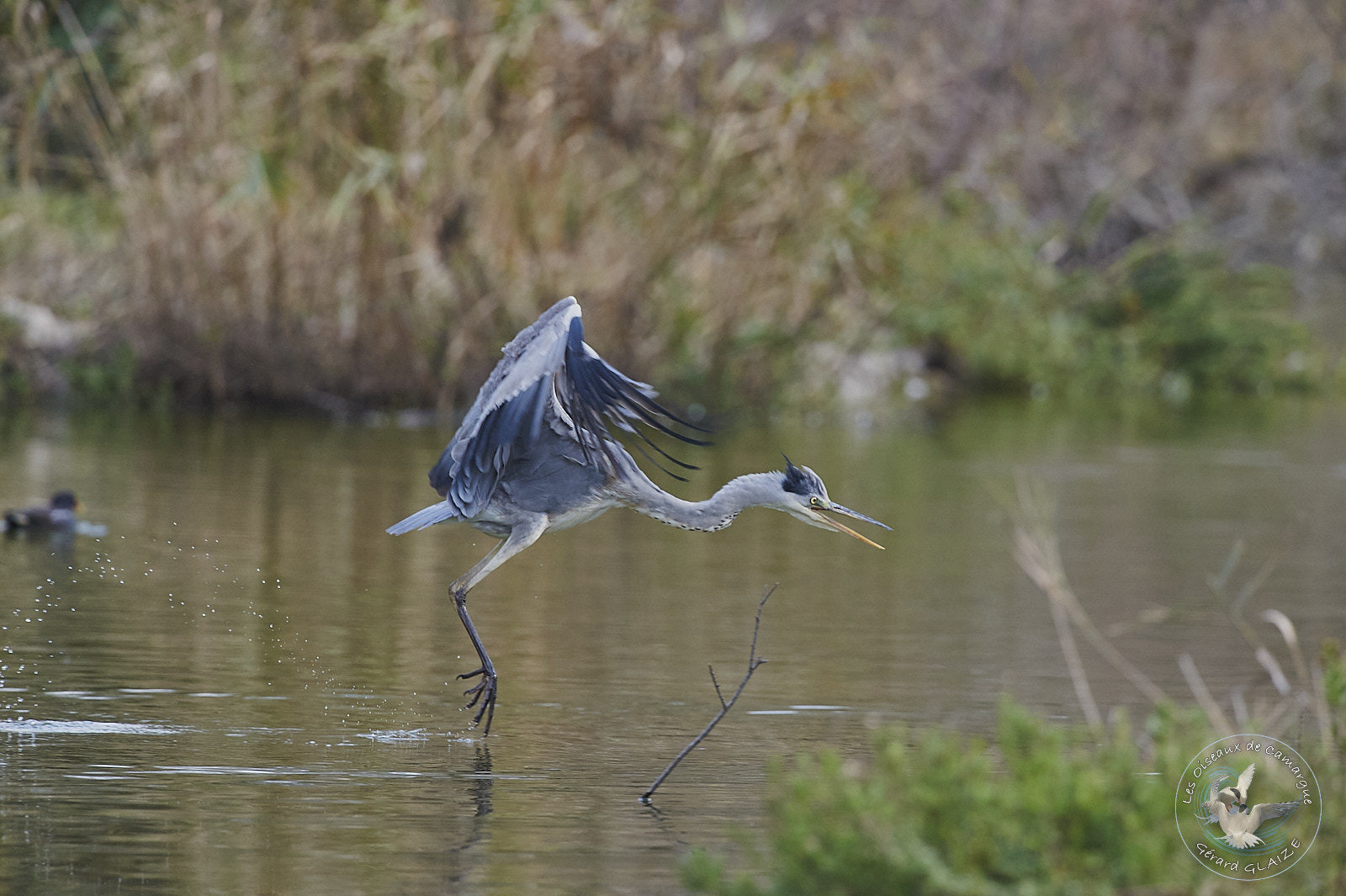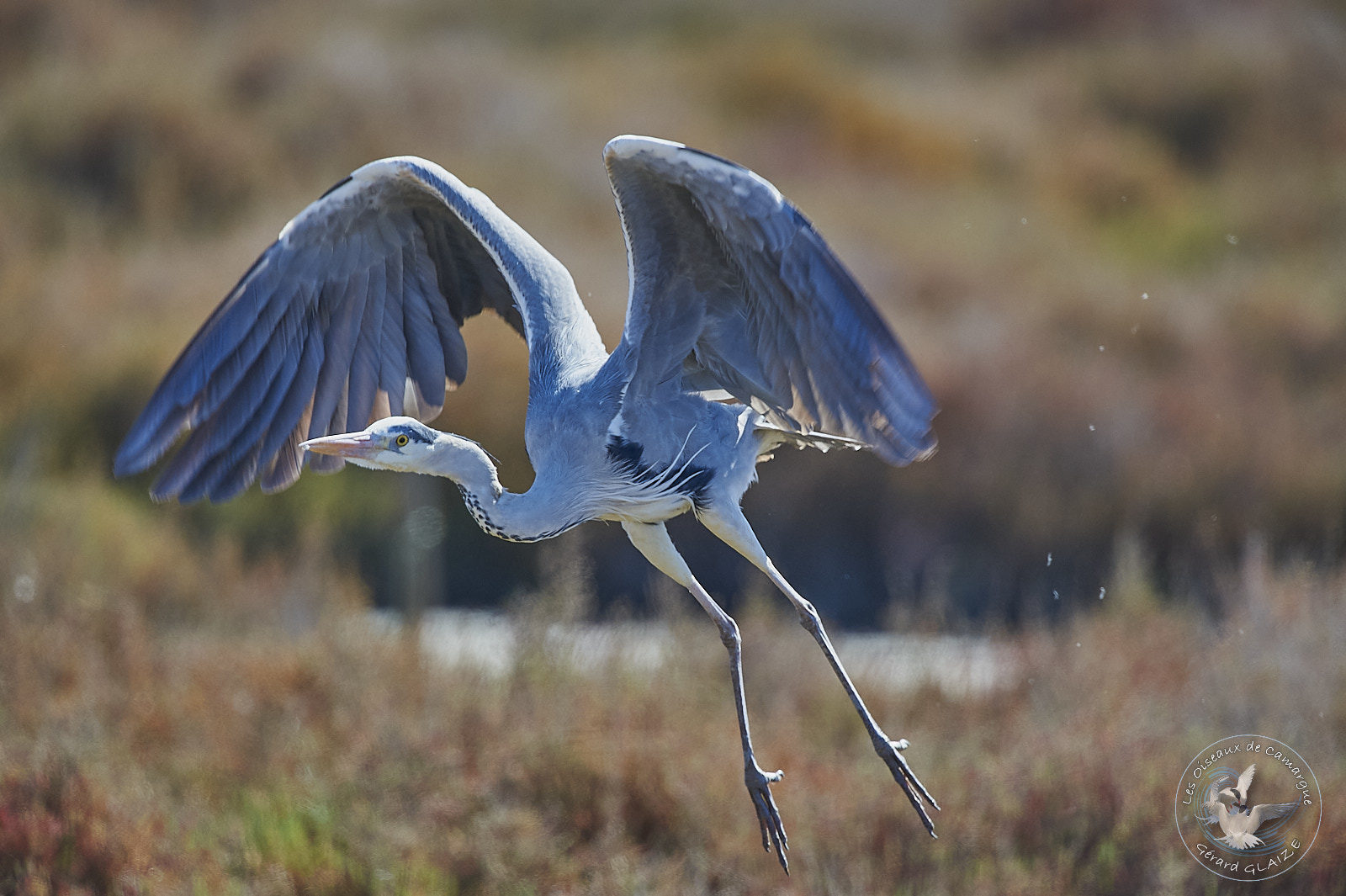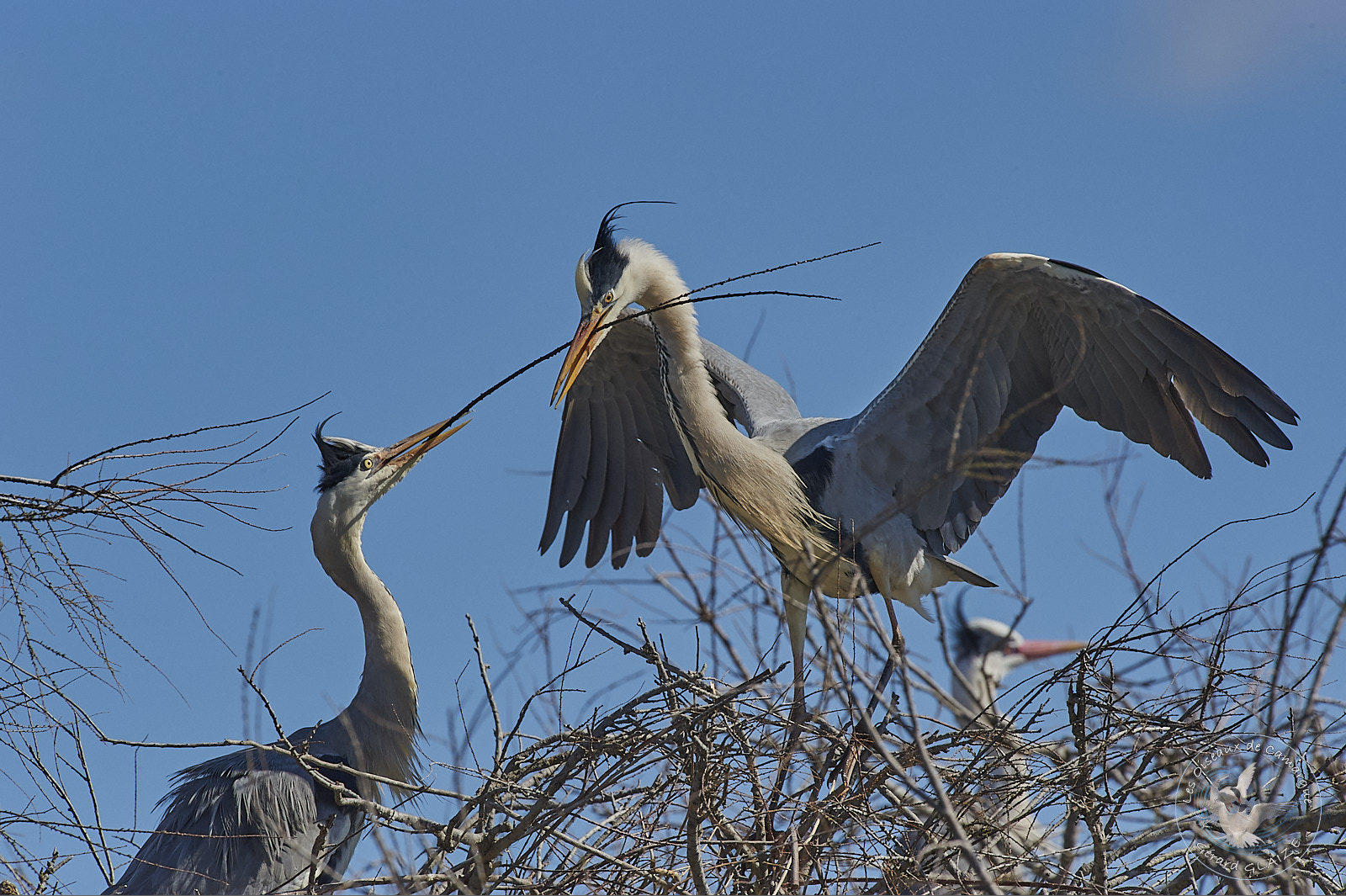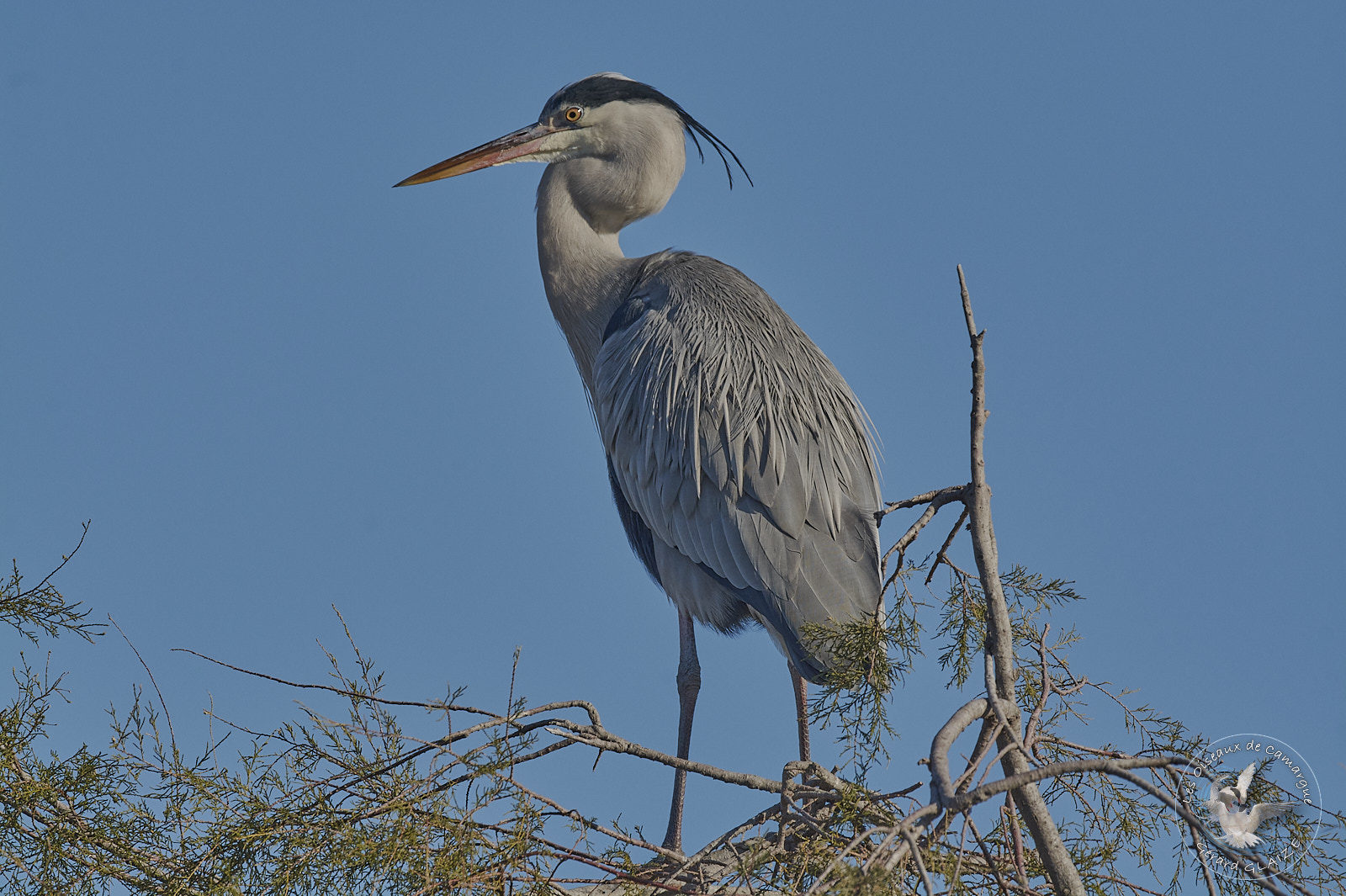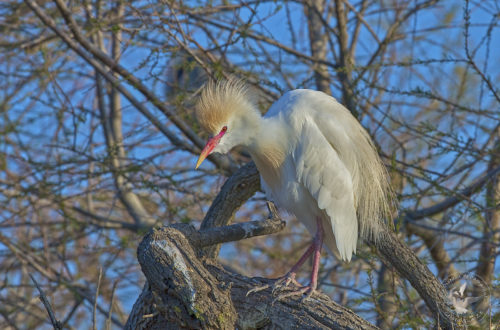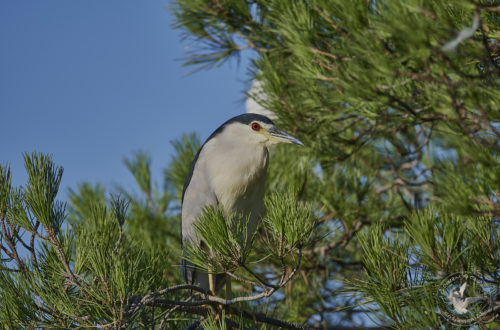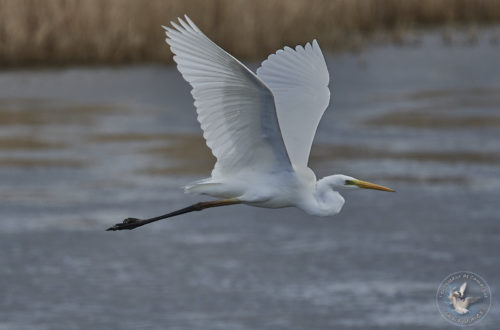Grey Heron
Last updated on June 20th, 2024 at 09:08 pm
The Grey Heron is the best known of our herons, it often nests in colonies, in trees near water. (heronry). In the Camargue, it is found near ponds and marshes, it likes shallow stretches of water. This bird is recognizable by its yellow beak (orange-yellow in the breeding season), and its ash gray plumage (hence its name) and its white and black head, neck striped with grayish white and black.
Grey Heron
Scientific name : Ardea cinerea
Family : Ardeidae
Long. de 84 à 102 cm, Env. de 155 à 175 cm
Weight : 600 à 1.200 gr
Flight
It flies with slow wingbeats, its head bent back with its neck curled in an S and its legs outstretched. The Gray Heron has a slow flight, with deep wing beats, giving the impression of power. It flies away majestically. It sometimes hovers, especially before landing.
Habitat
Herons frequent any area and wetlands (marshes, streams, ponds, etc.) where they can find food. It can be fresh, brackish or salt water, still or flowing, as long as it is shallow. The gray heron commonly roosts in tall trees along ponds.
Regime – Diet
It is a formidable hunter on the lookout, which remains motionless at the edge of the water, and catches everything that comes within reach of its beak (small rodents, frogs, and especially fish…). It suddenly spreads its neck and gives a violent peck at its prey. He catches fish on the lookout, perfectly still.
Nesting
The Grey Heron builds a very large nest made of sticks in a tree. It nests in large colonies often on a single tree (heronry). The female lays 3 to 5 dull, grey-blue eggs, sometimes tinged with red. Incubation is by both parents alternately, and lasts about 26 days. At hatching, the chicks have a grotesque appearance, with very abundant head down. They are fed by both parents. Encouraged by the little pecks of the young, they regurgitate the food that the chicks take directly from the beaks of the adults.
Protection
Currently, the species is doing very well thanks to its total protection, and better management of its habitat.
Cry
It is a very loud cry, close to croaking, the one it gives off is a very rough and raspy “waarr”. The flight call is of the same type, but slightly softer. It’s a loud, croaking, higher-pitched “weeh”.
This series of photographs was taken at the Ornithological Park of Pont de Gau, near Sainte Marie de la Mer.
Other Links
- You can see the article from my site “Birds of Camargue” for more information on the Camargue and the Birds.


